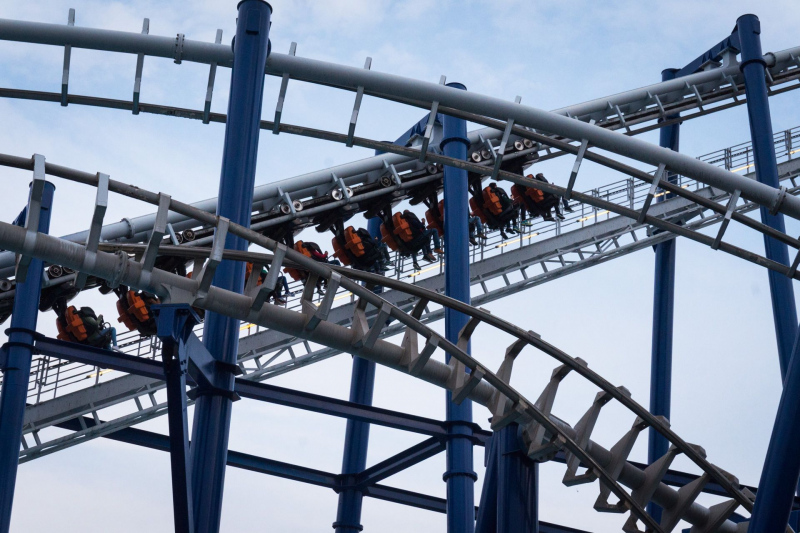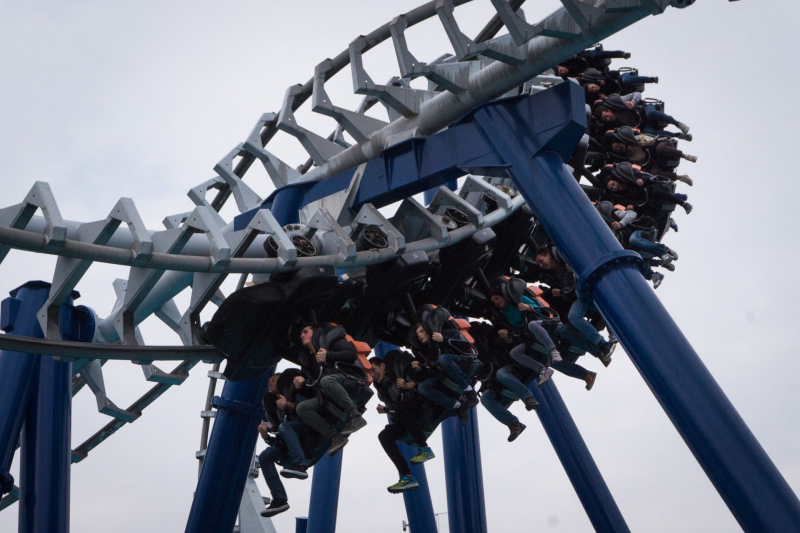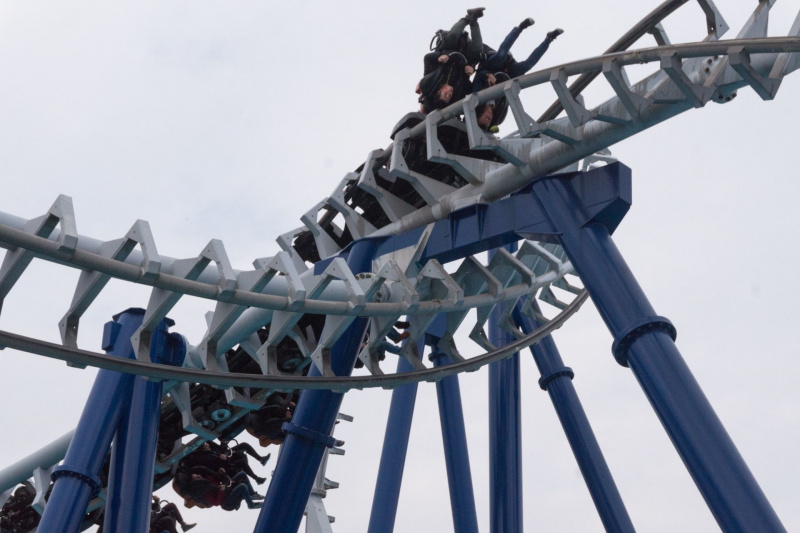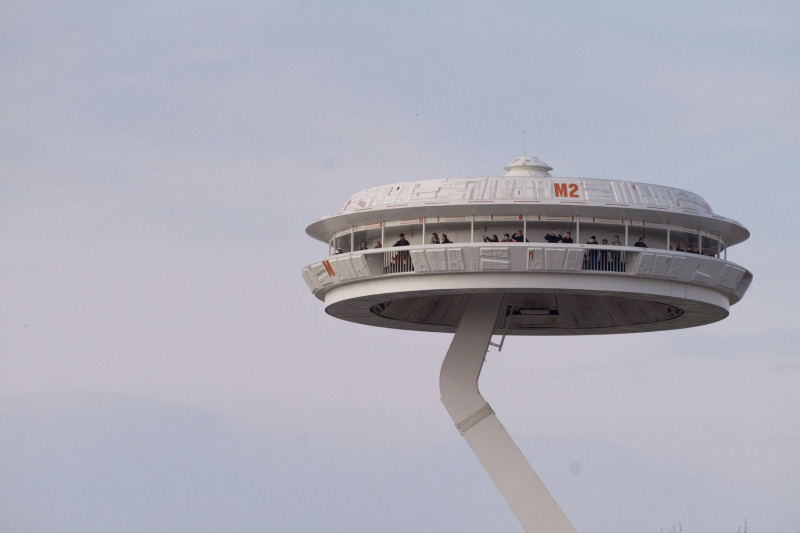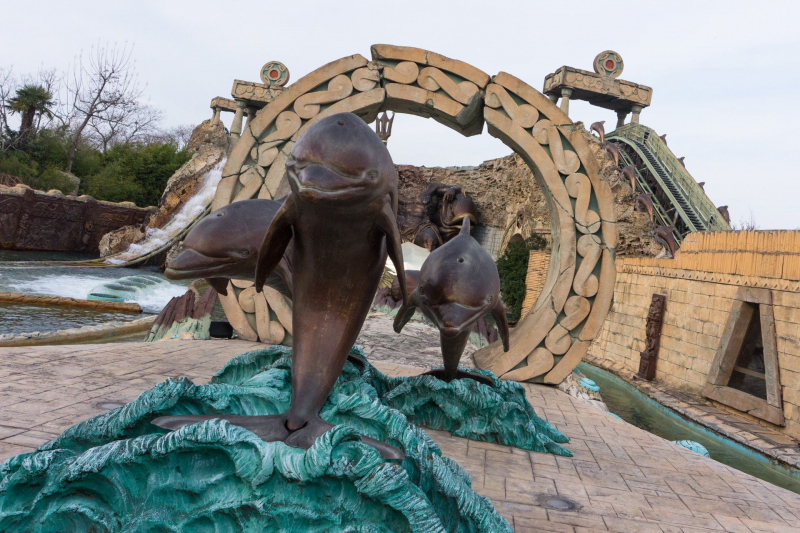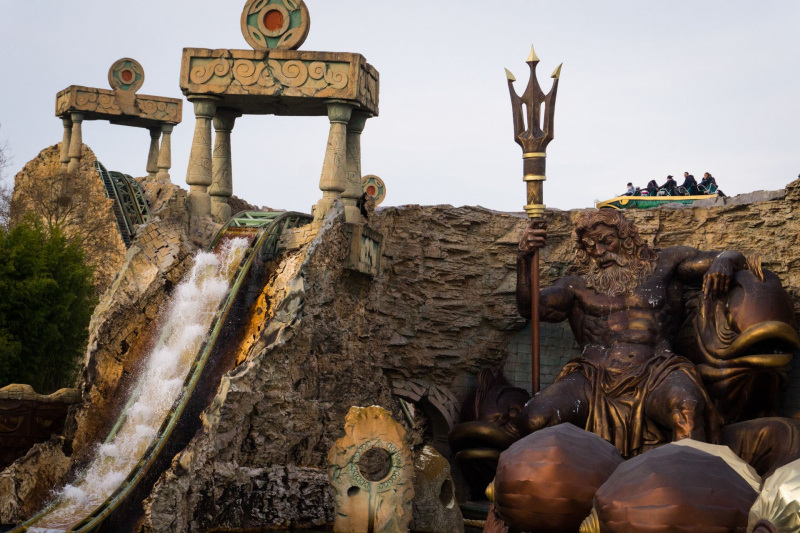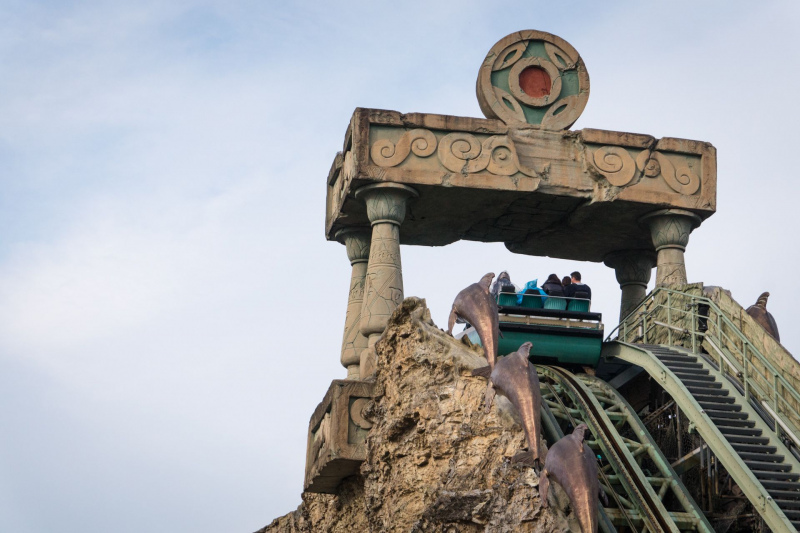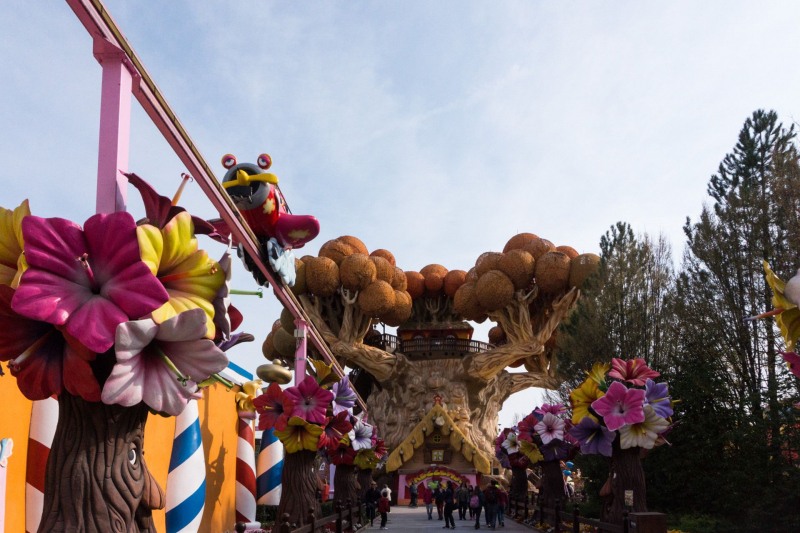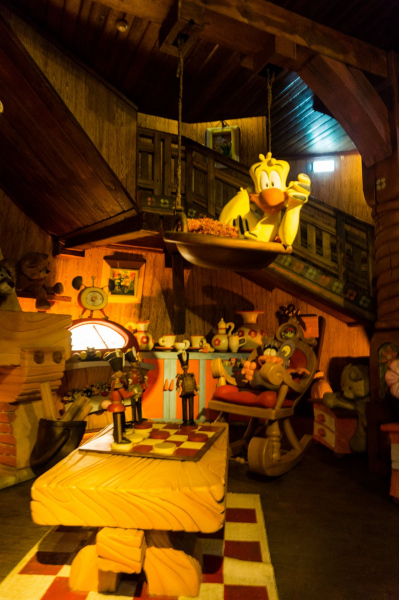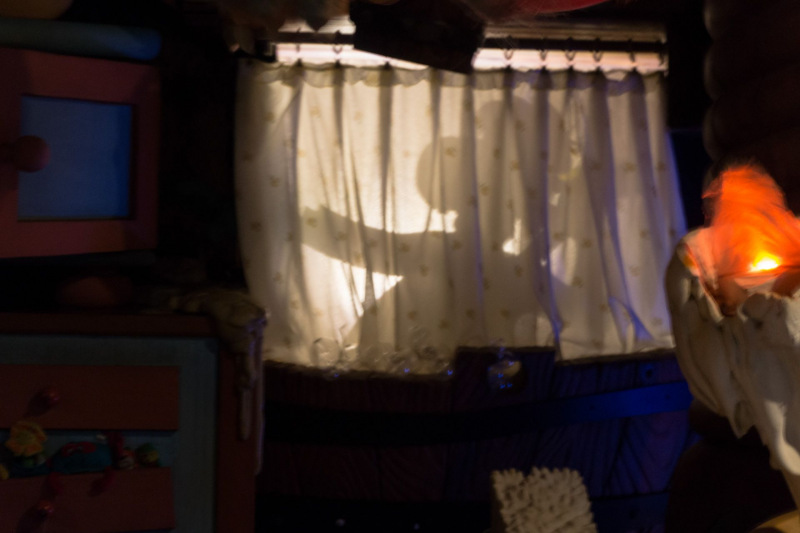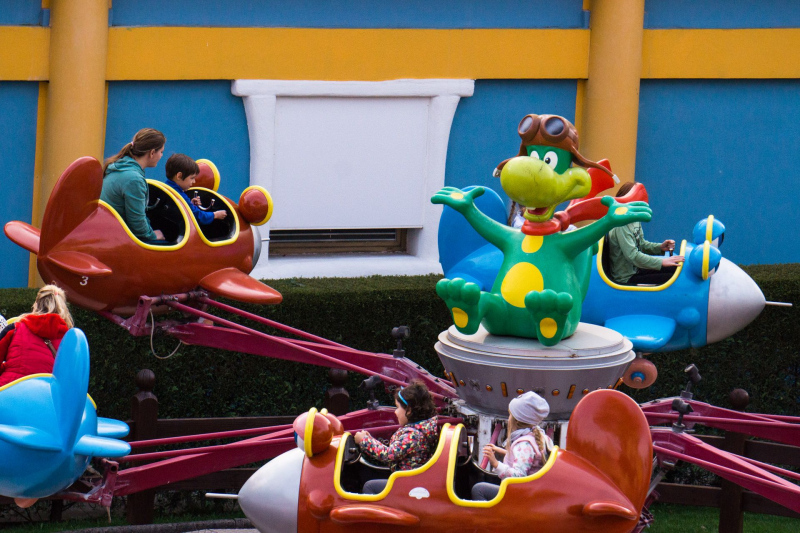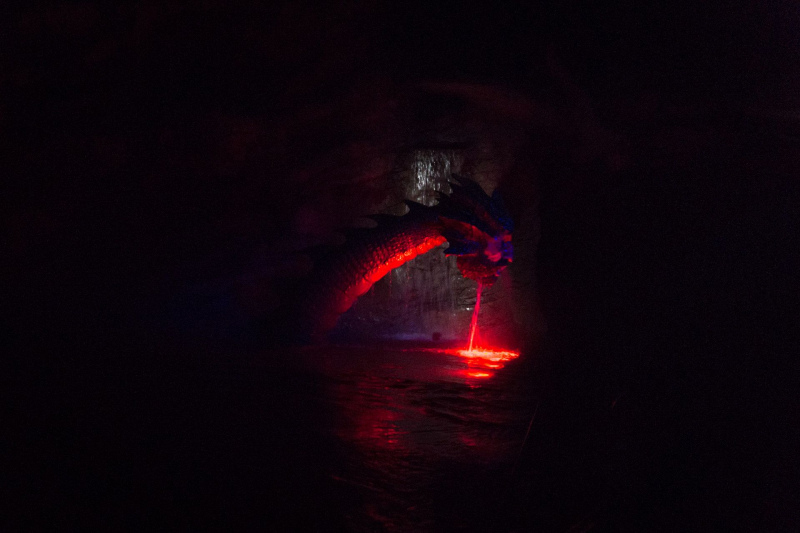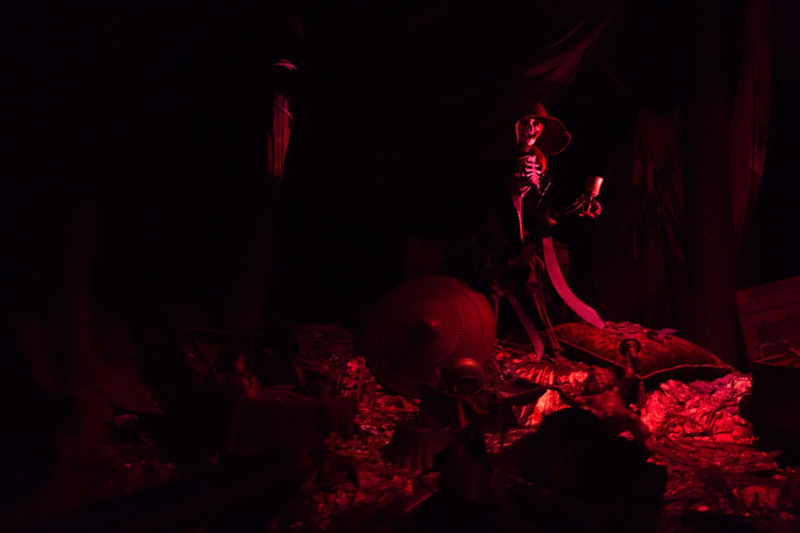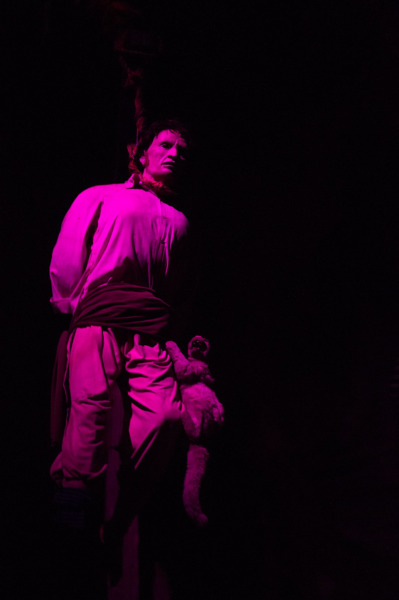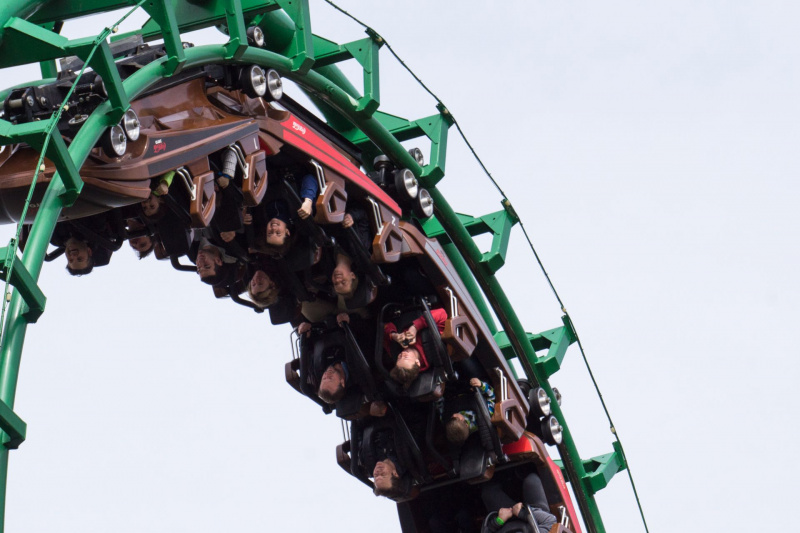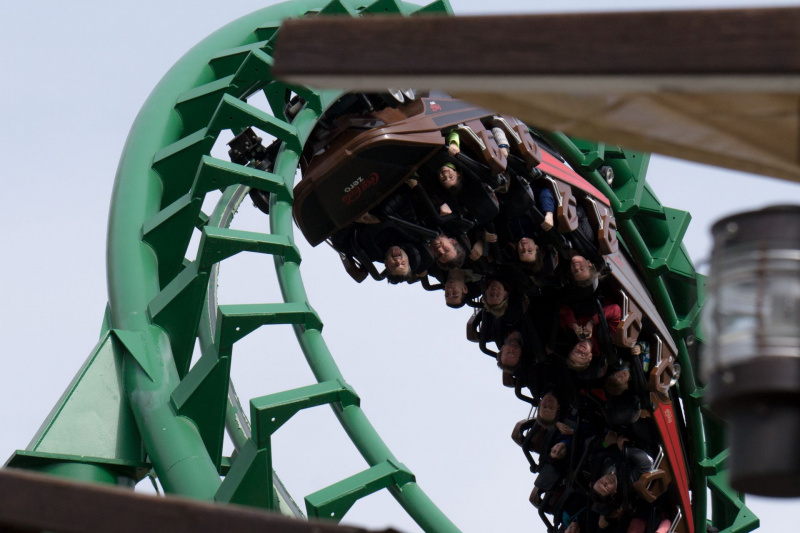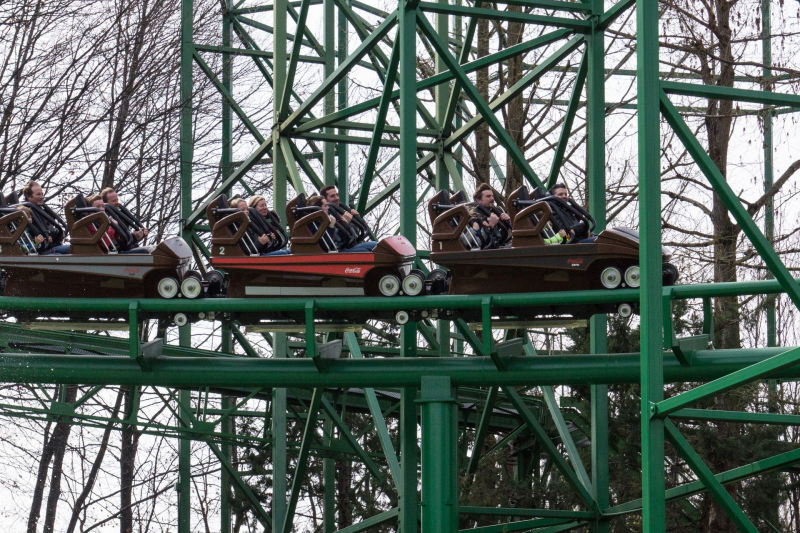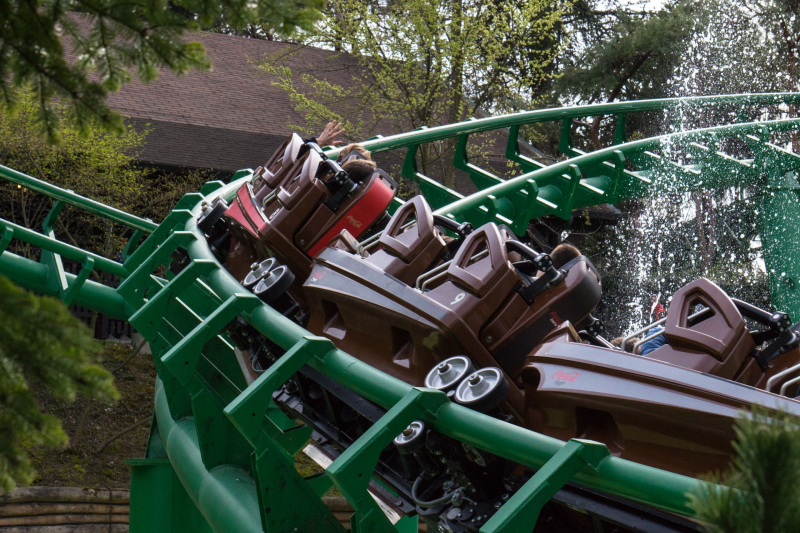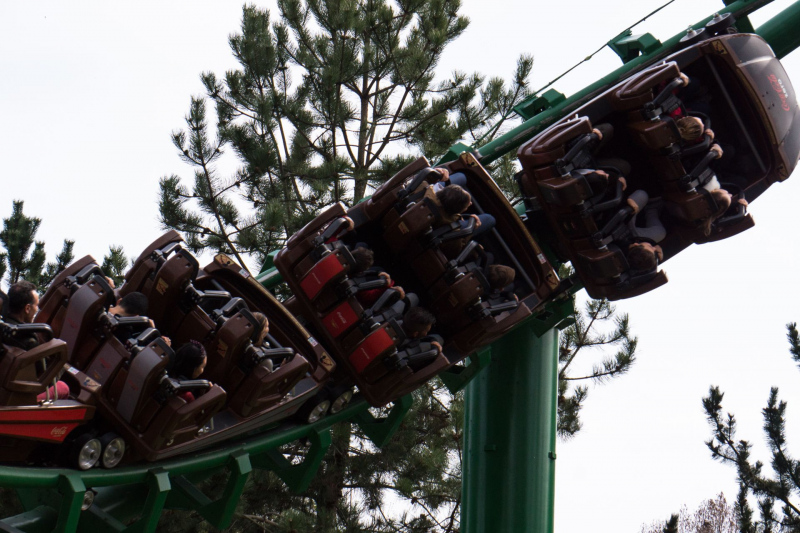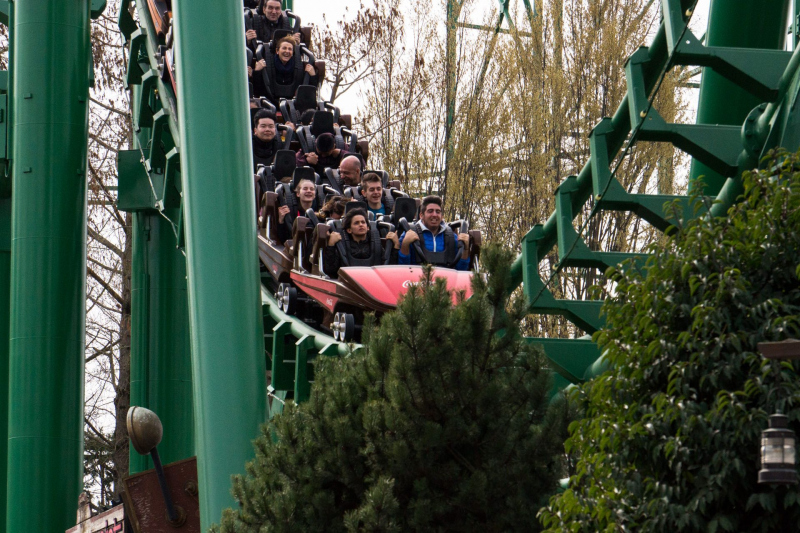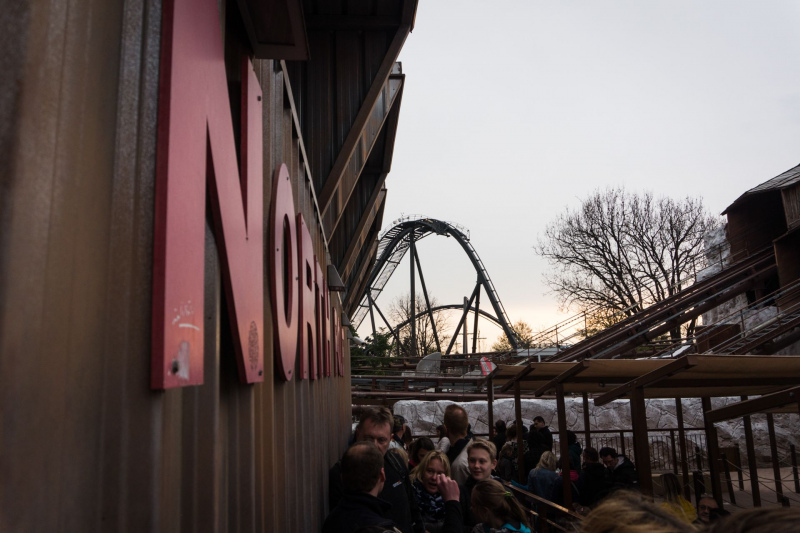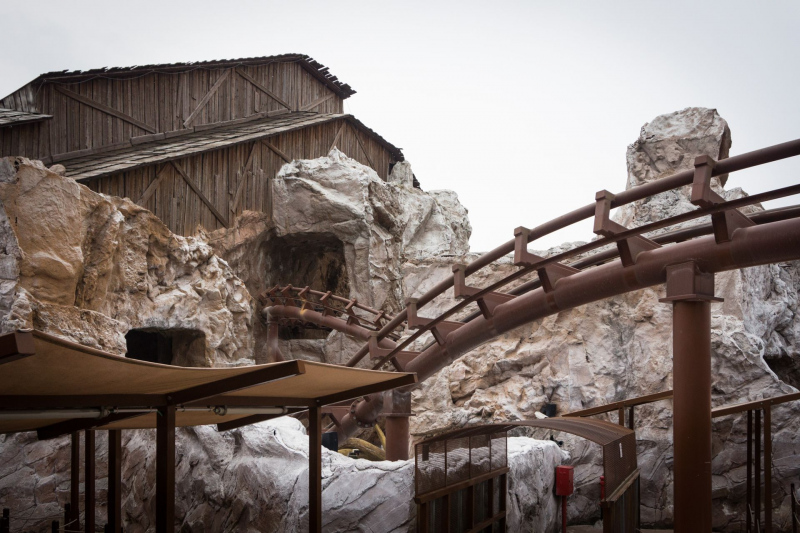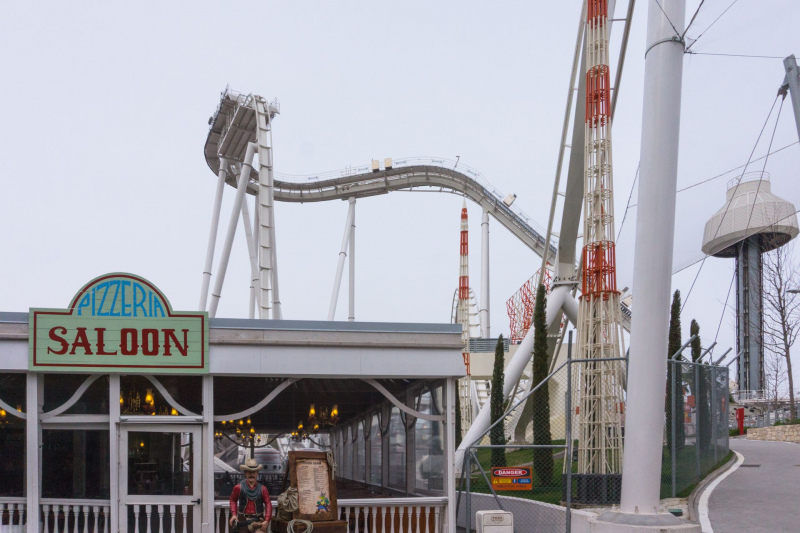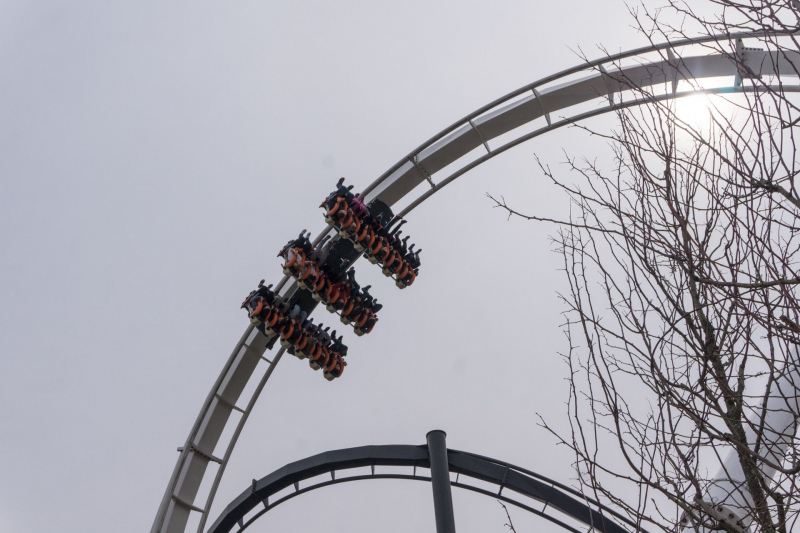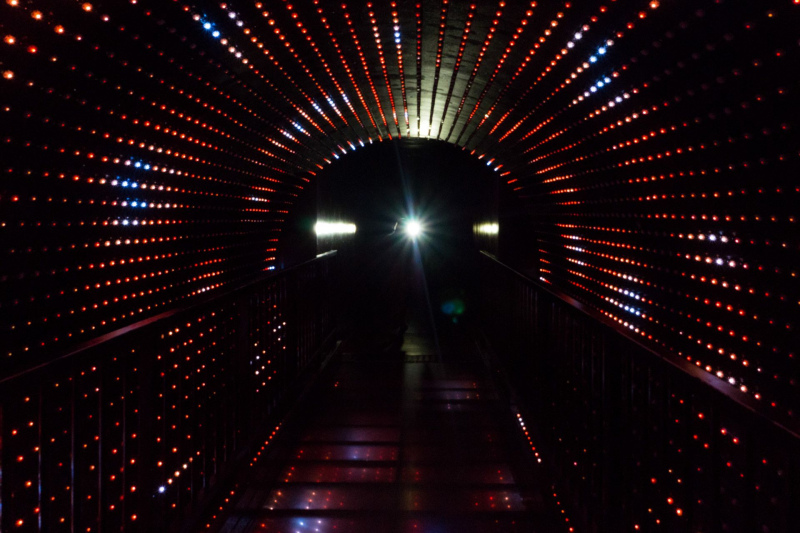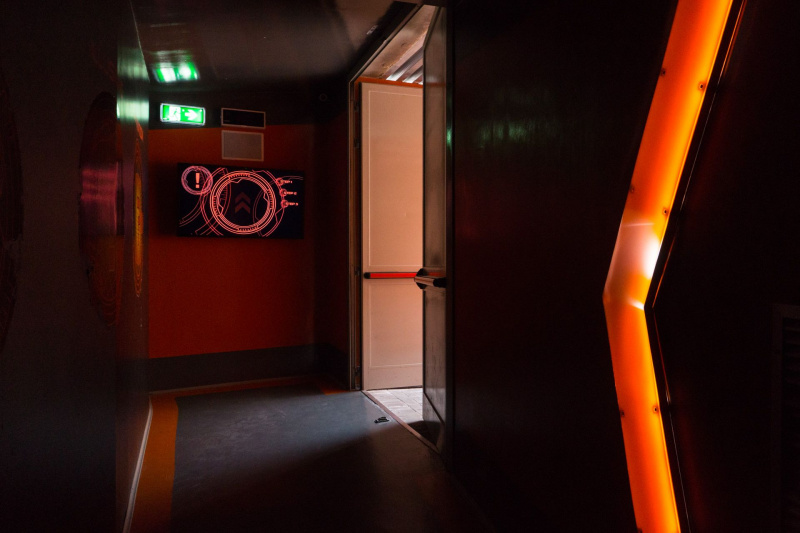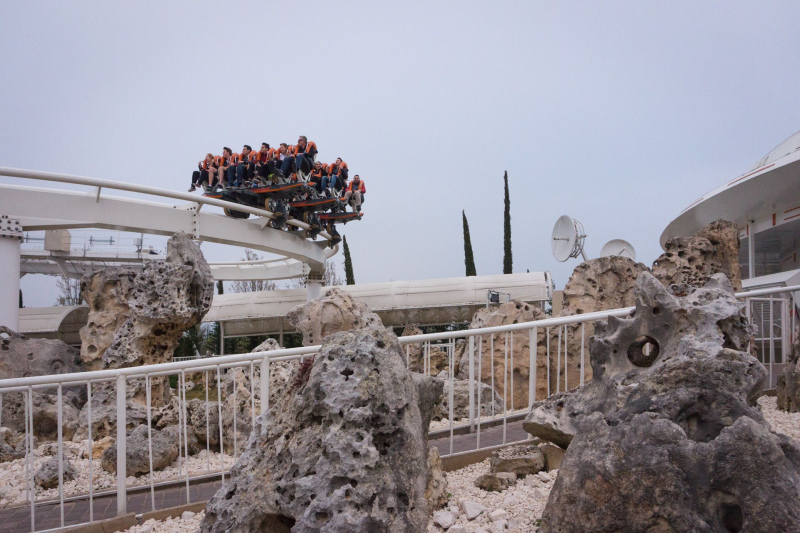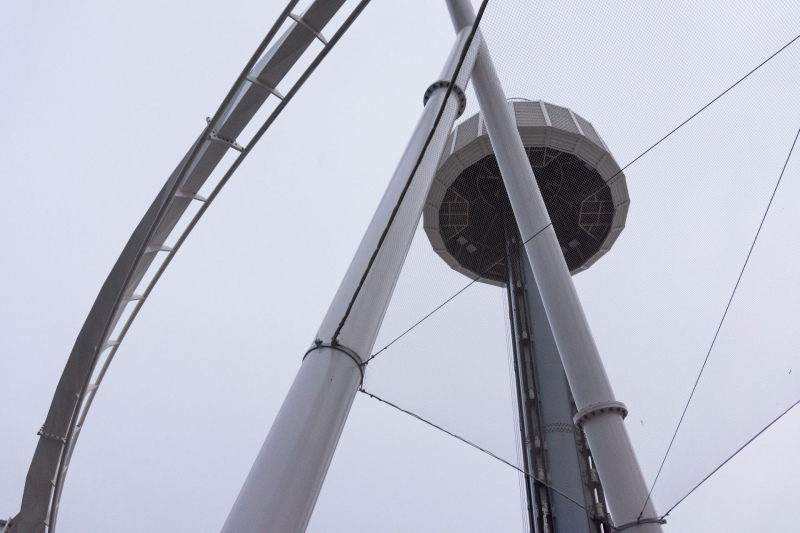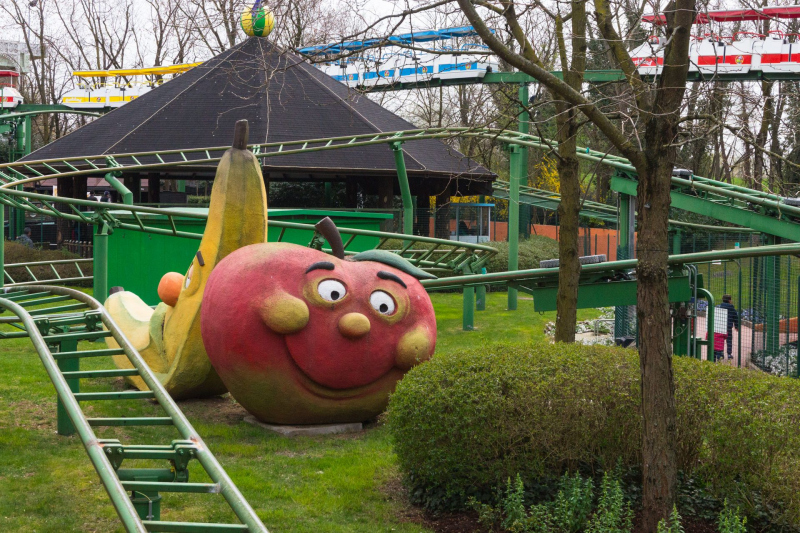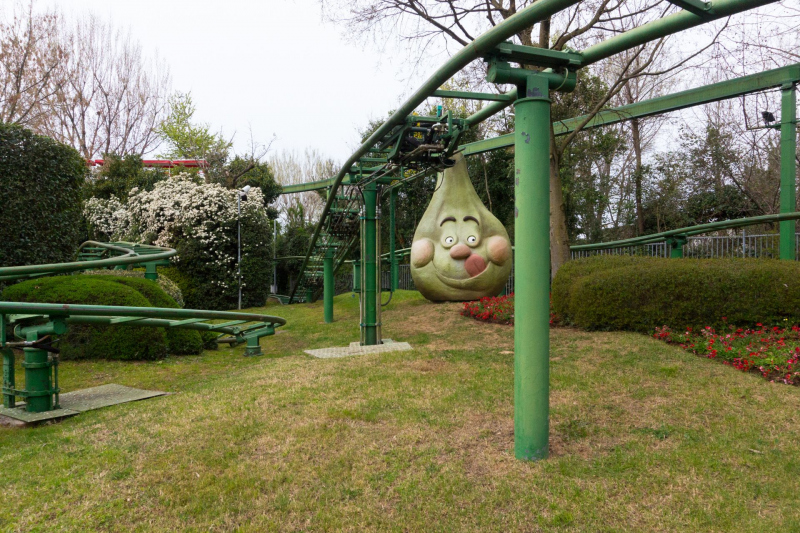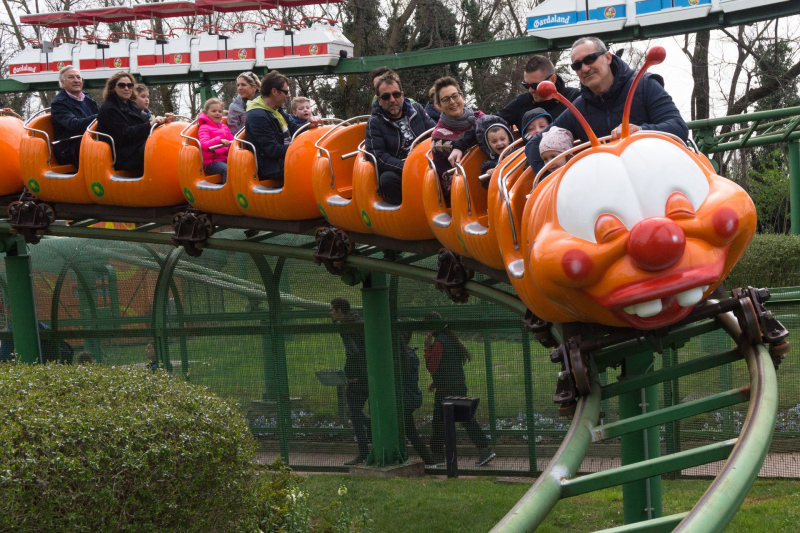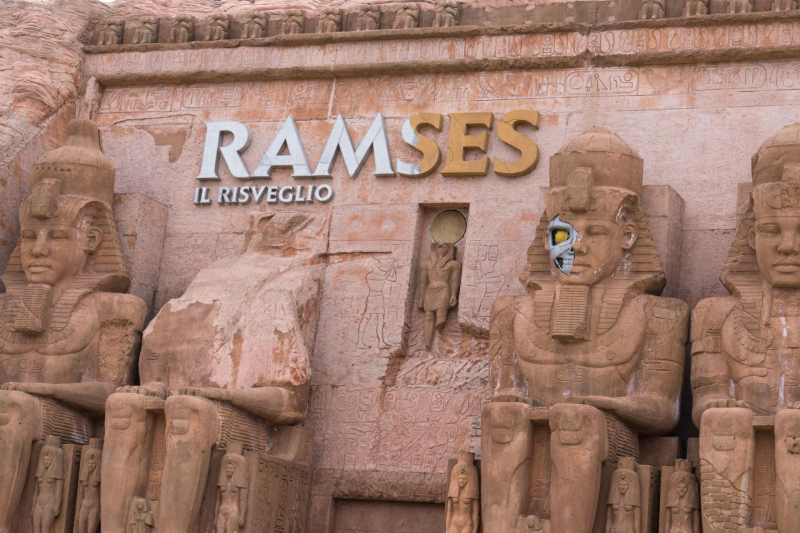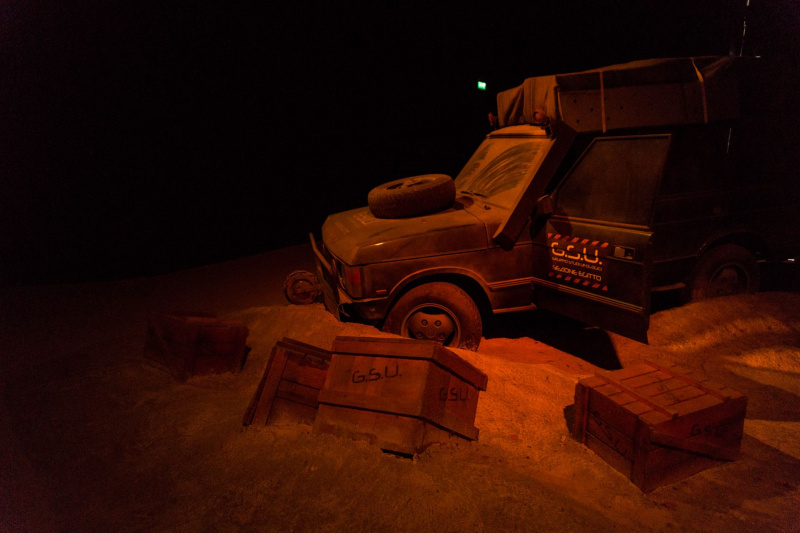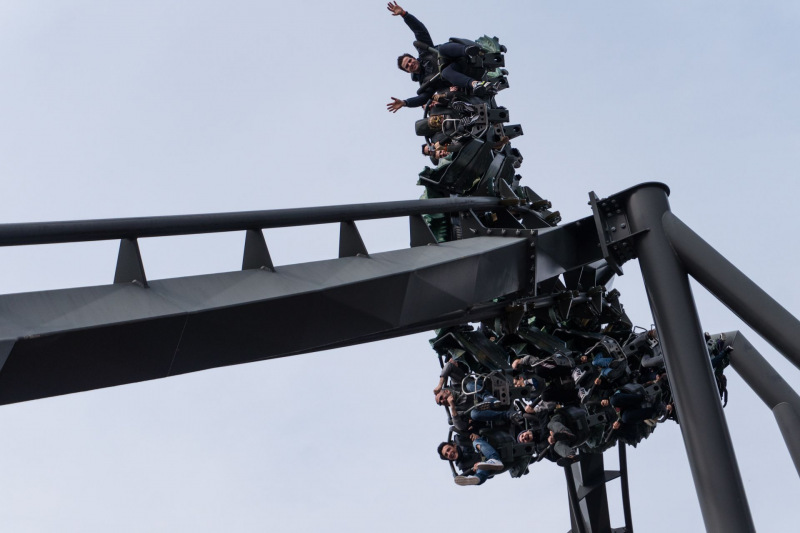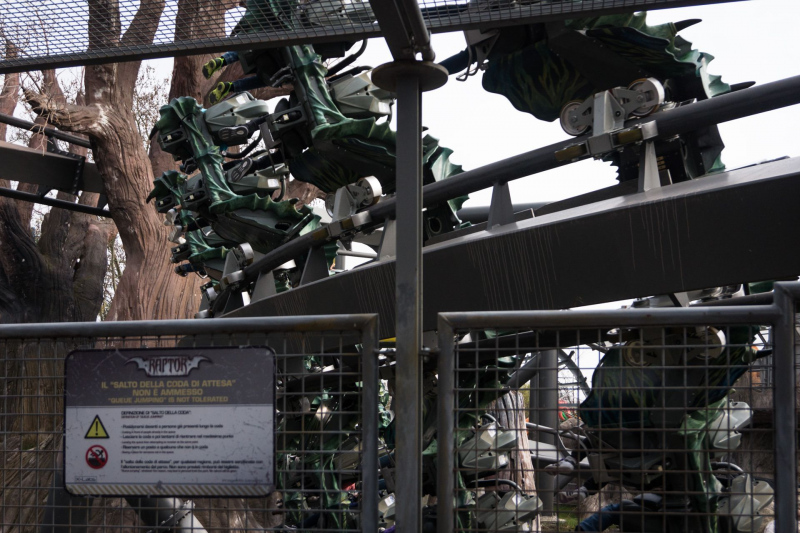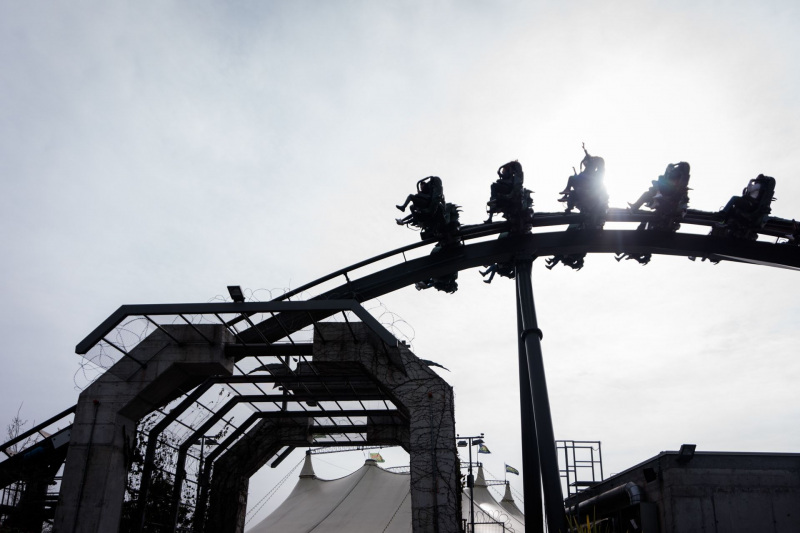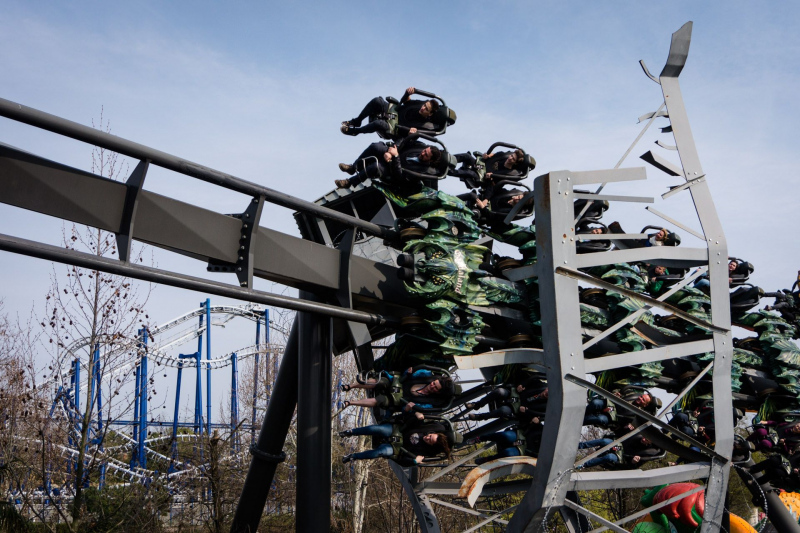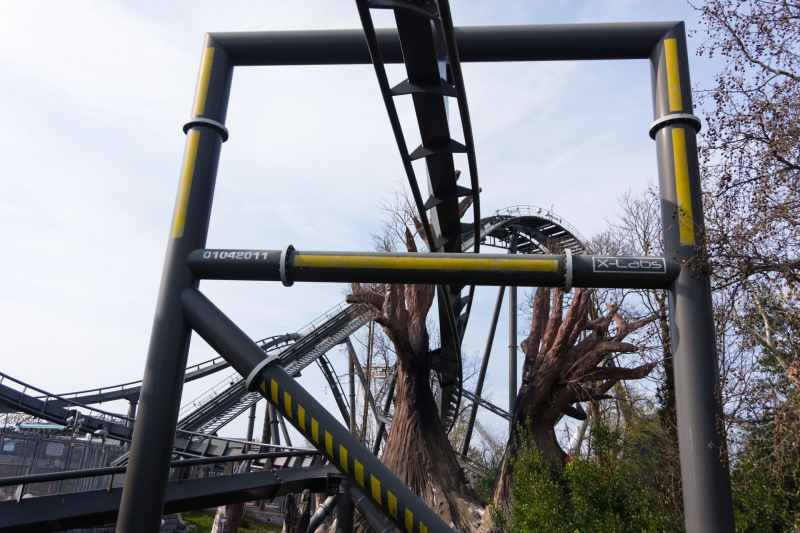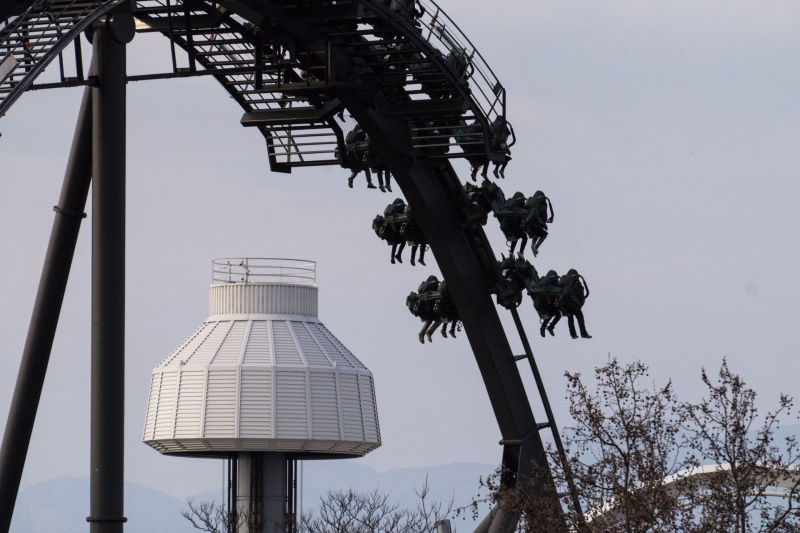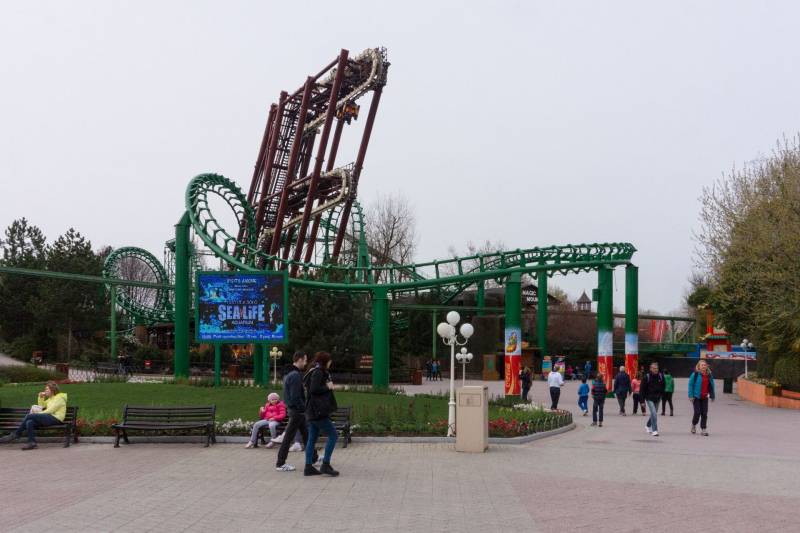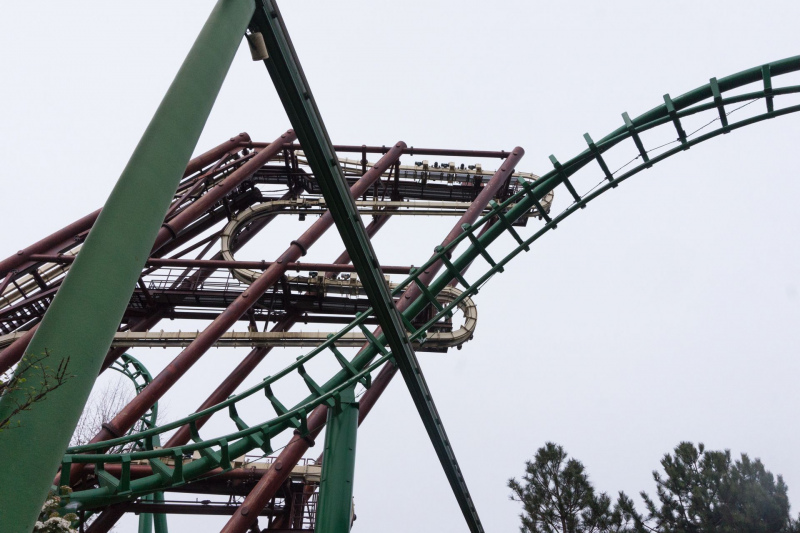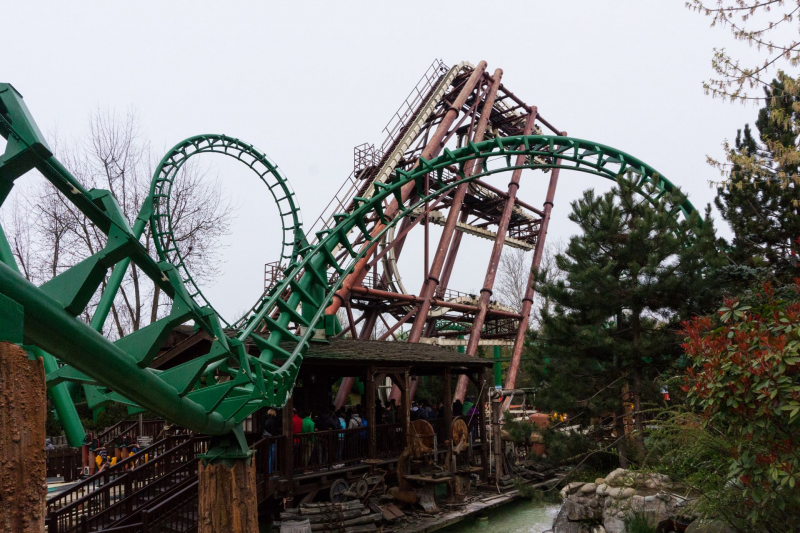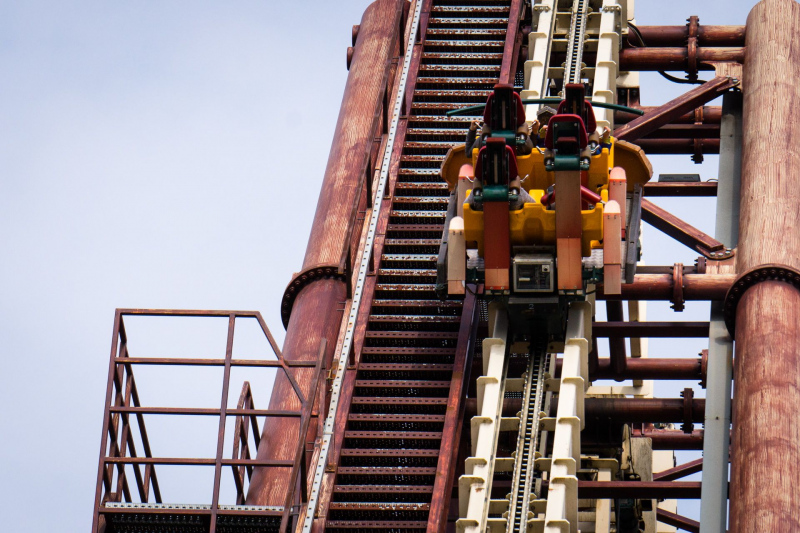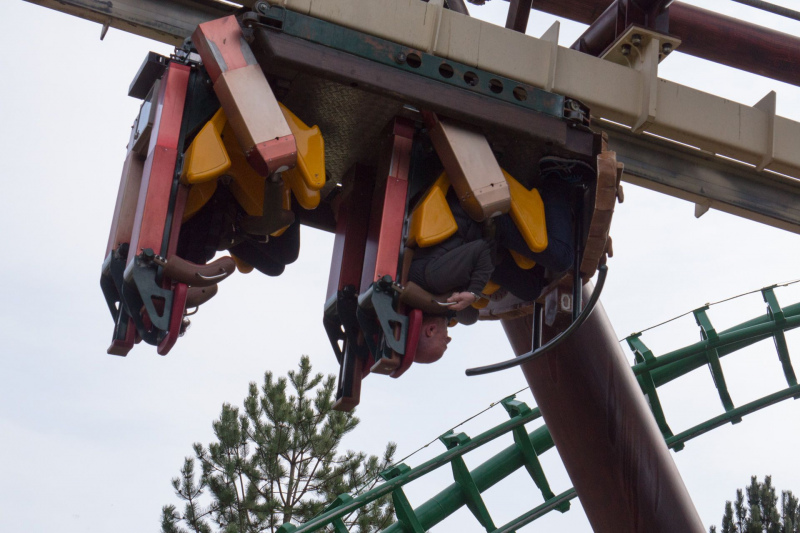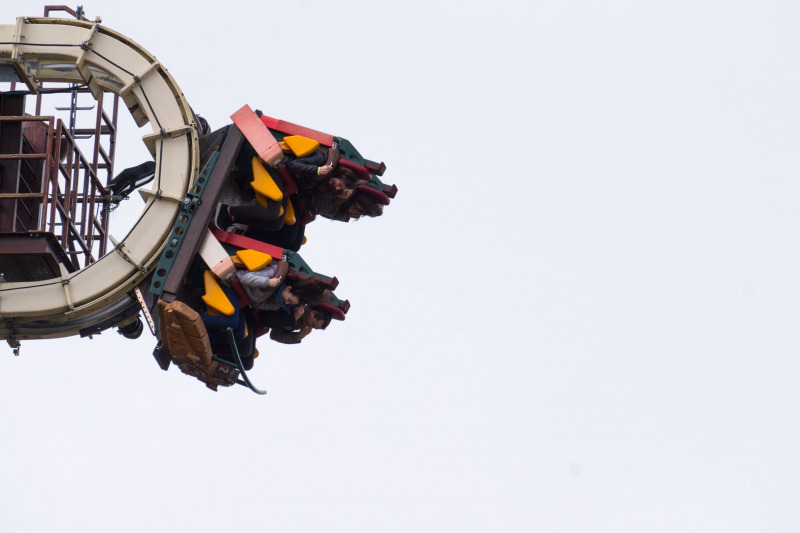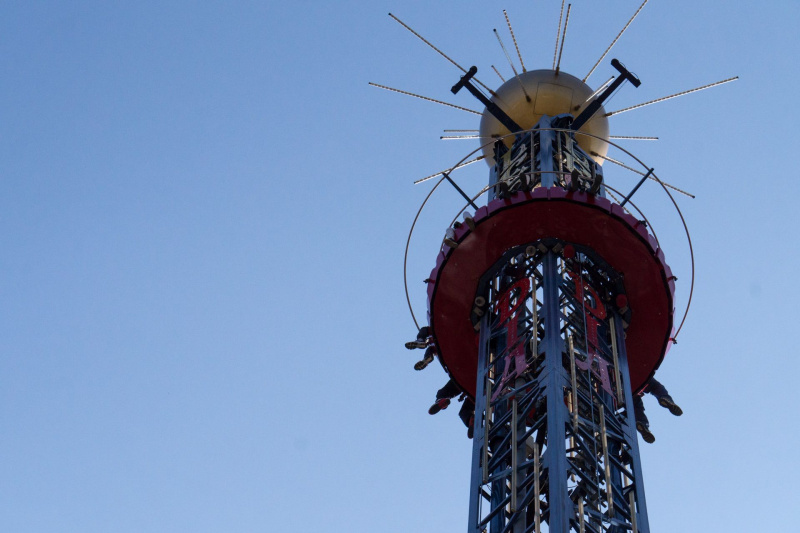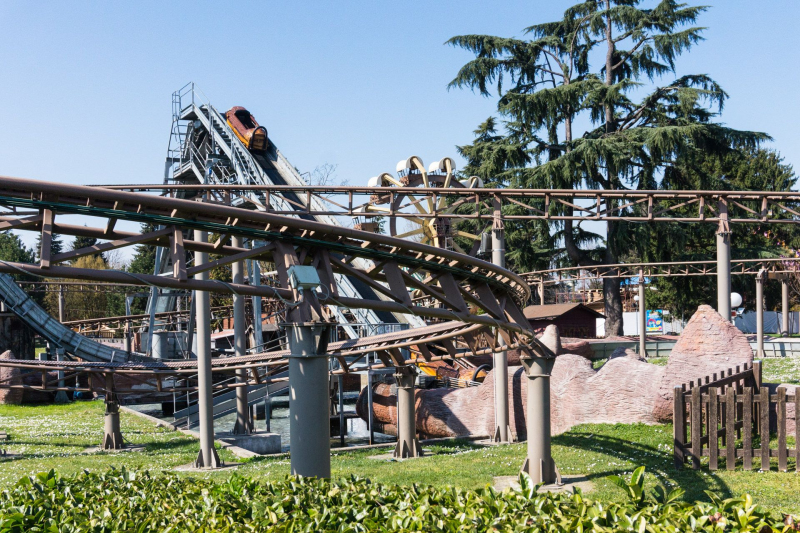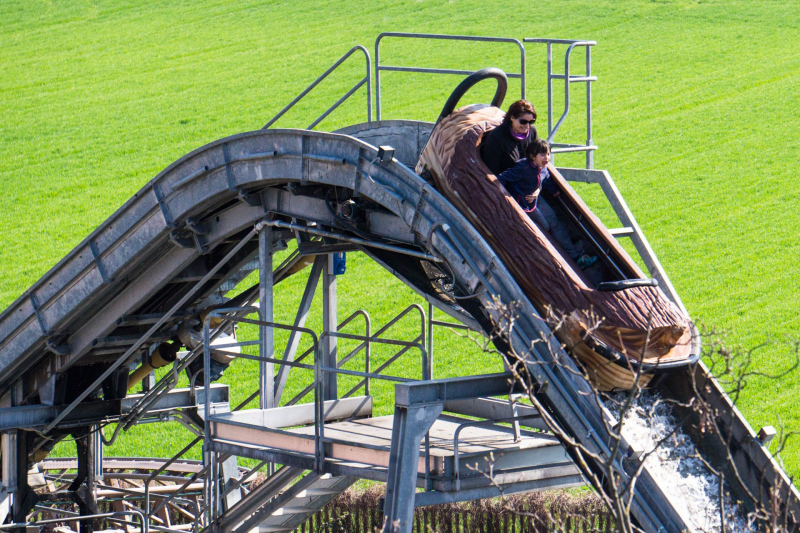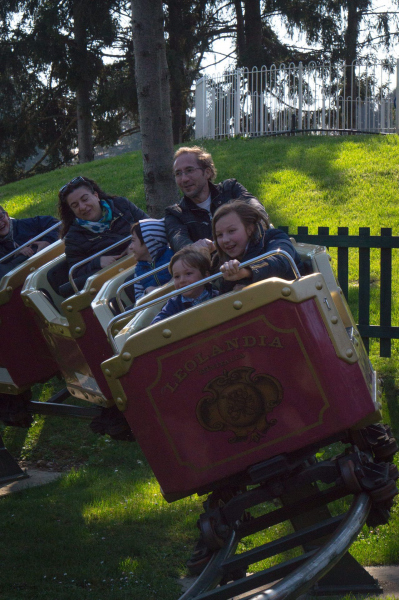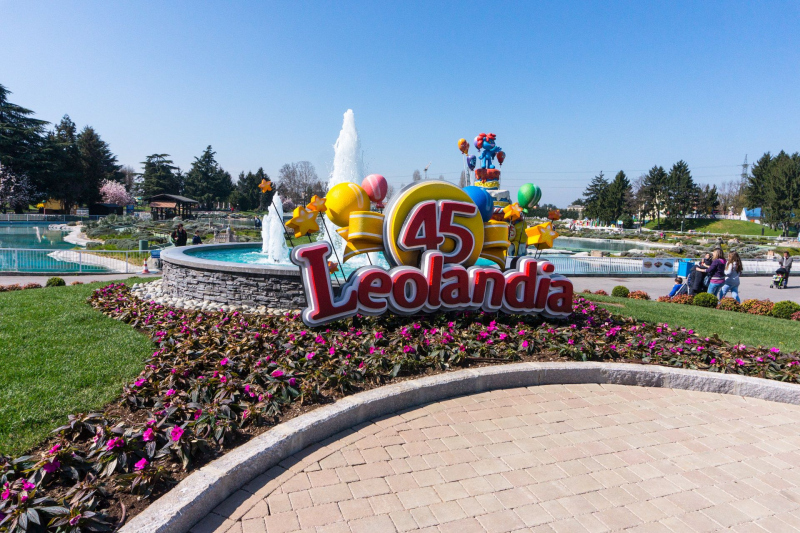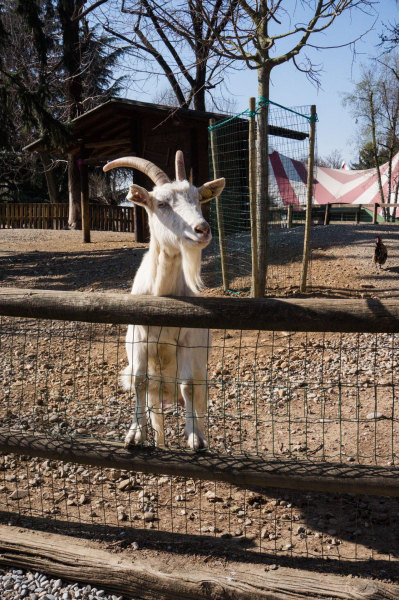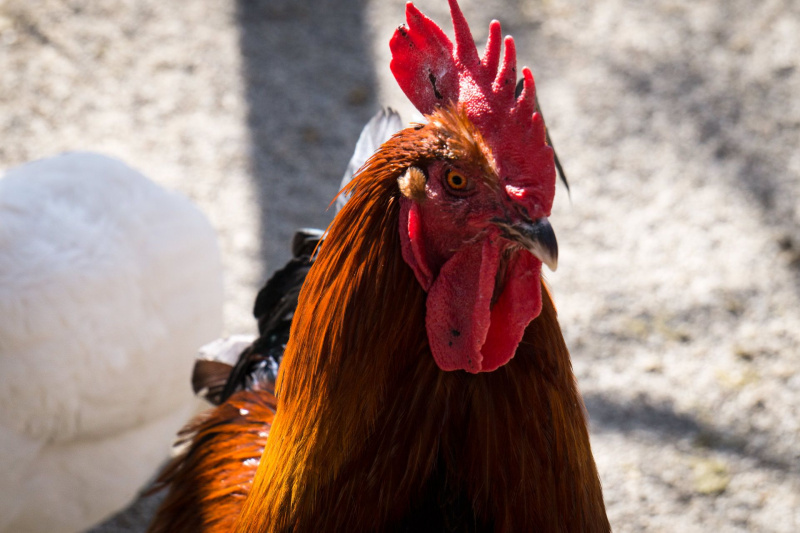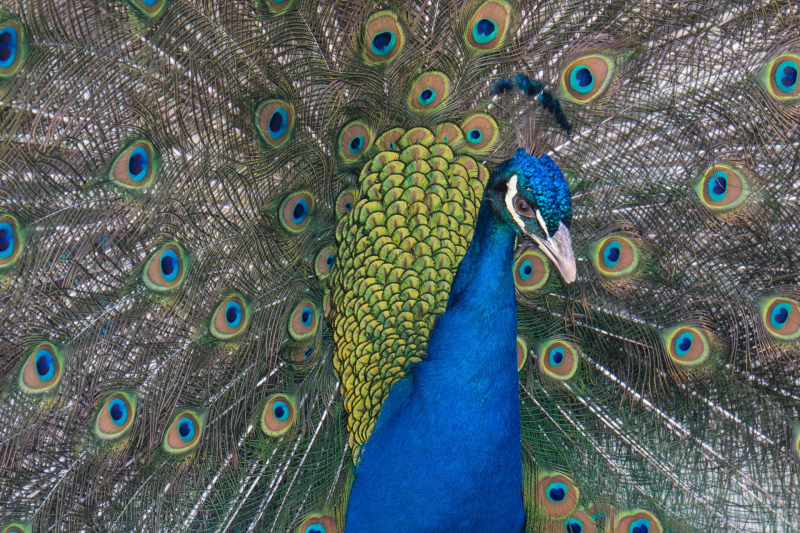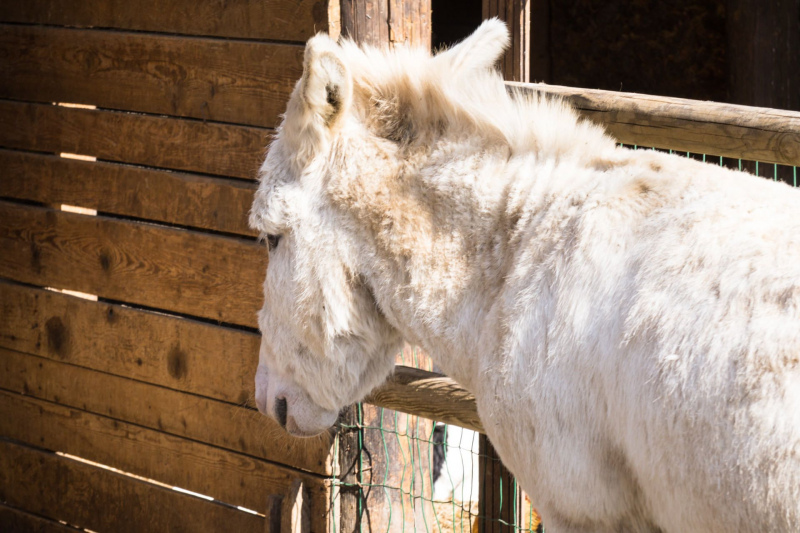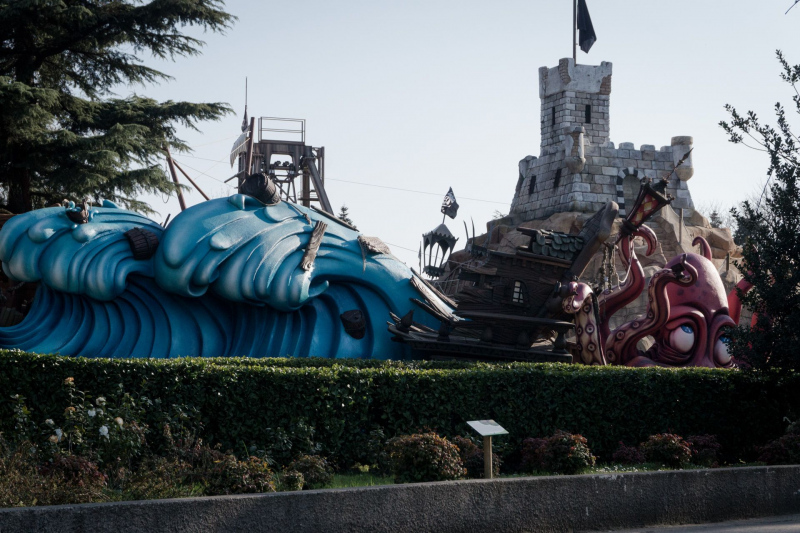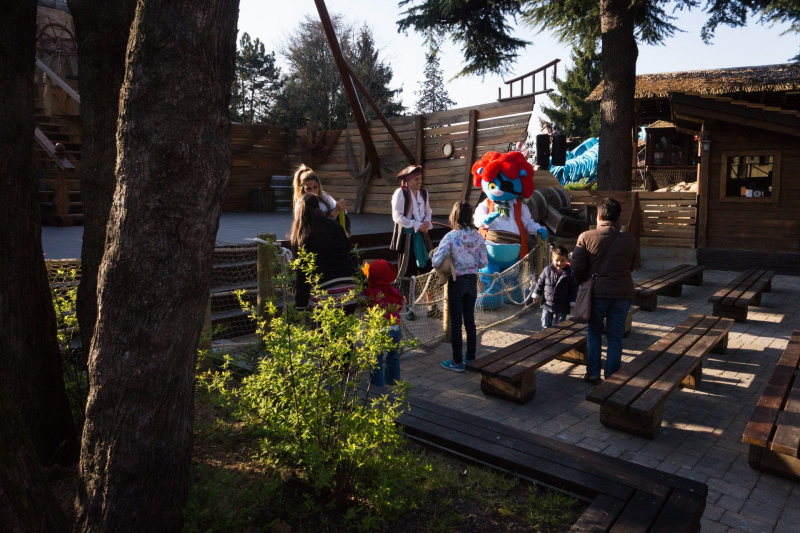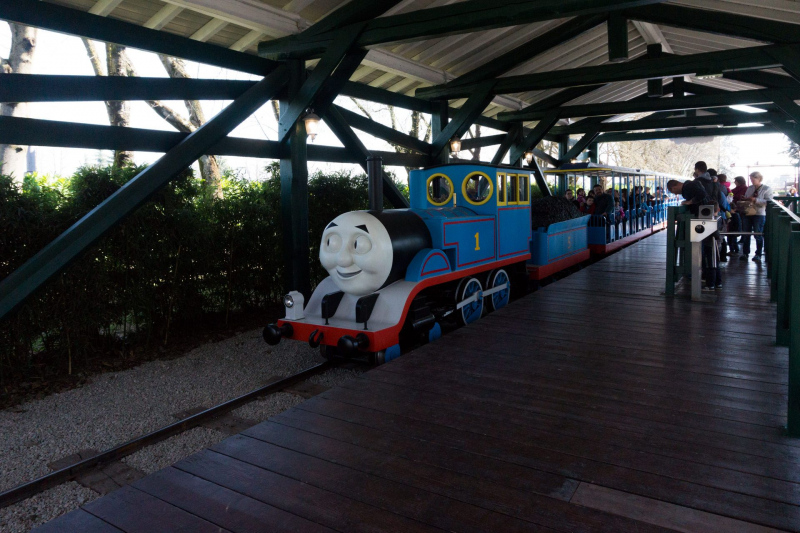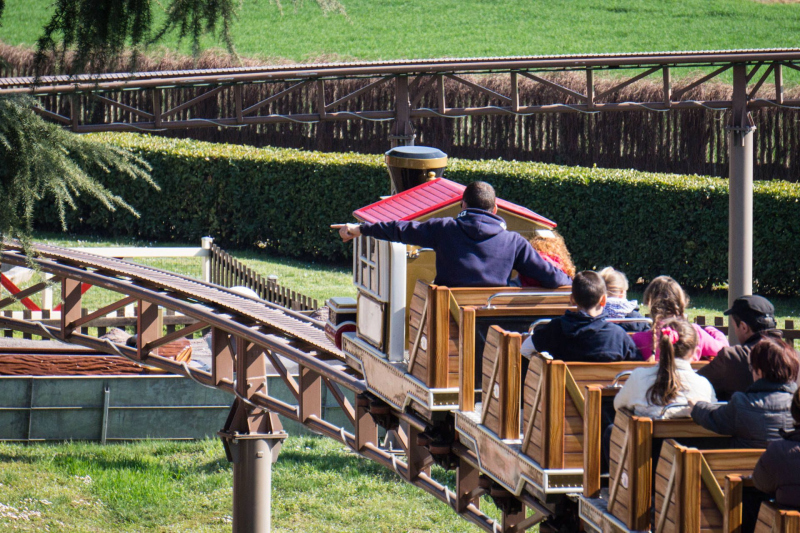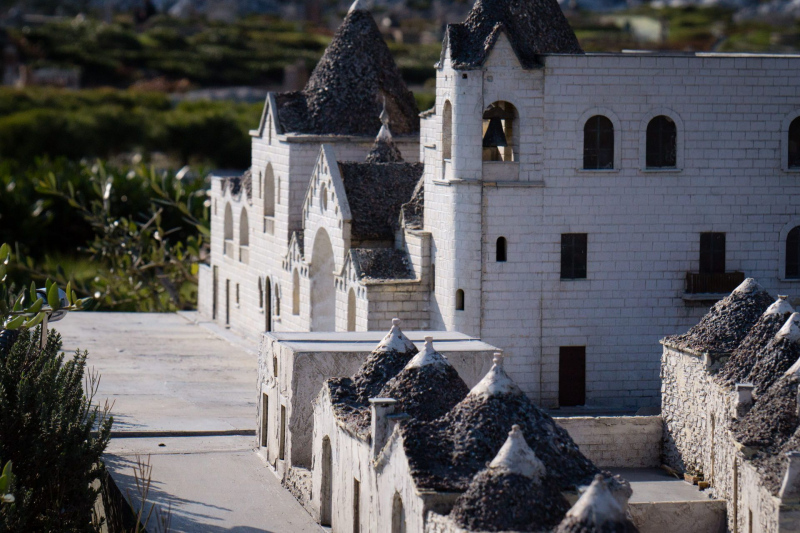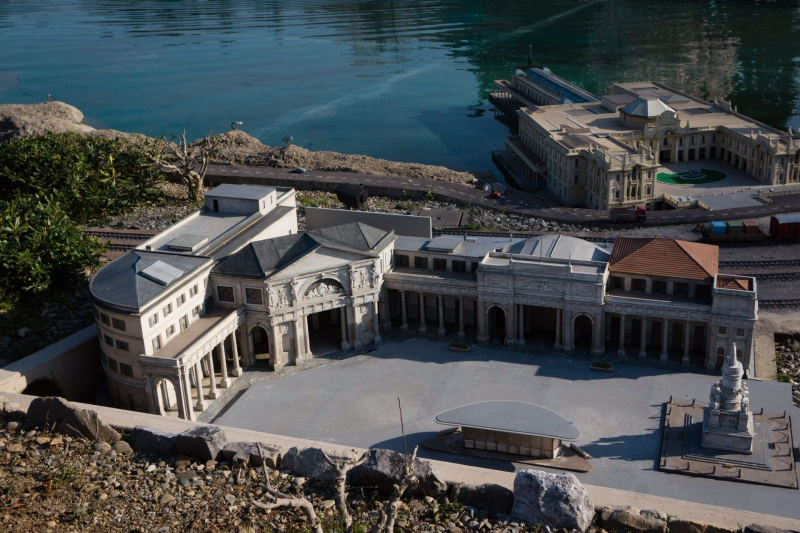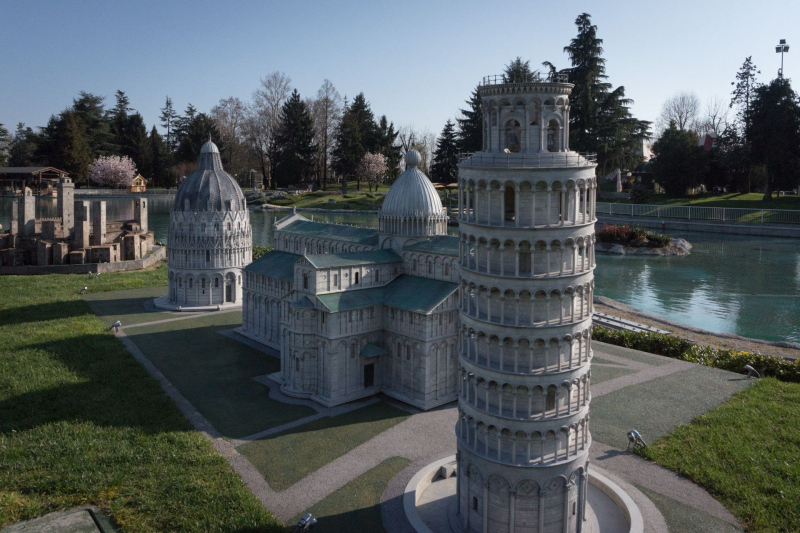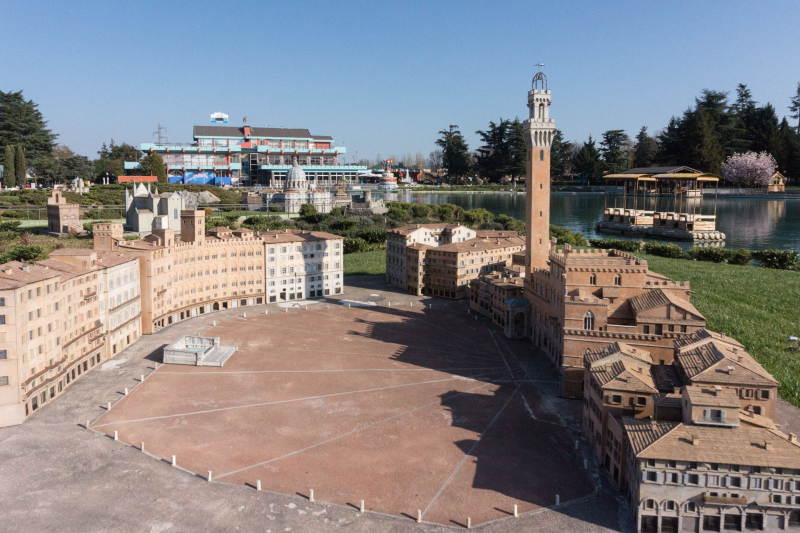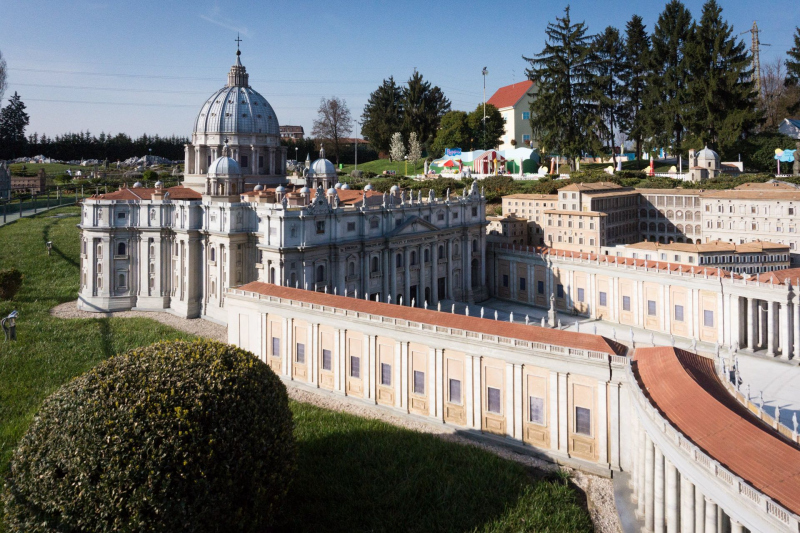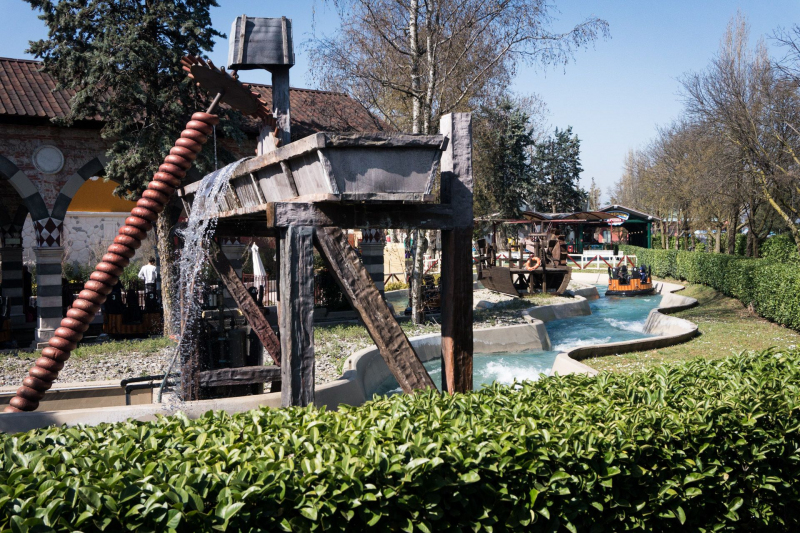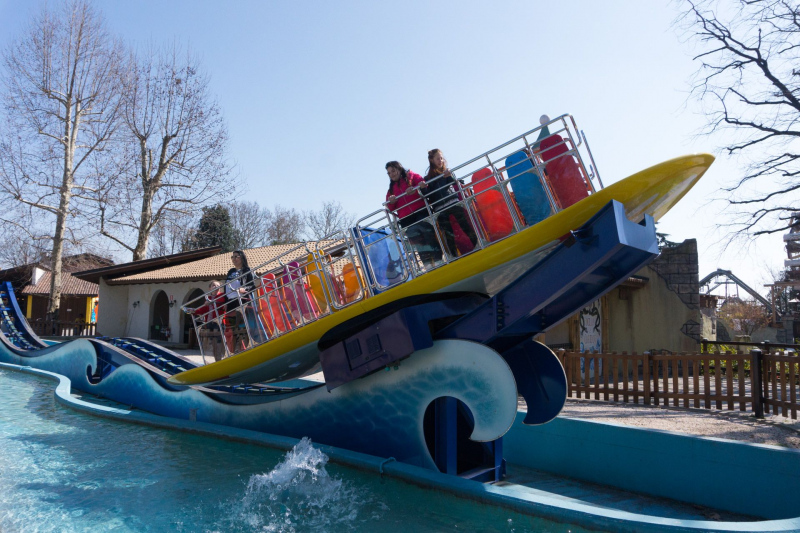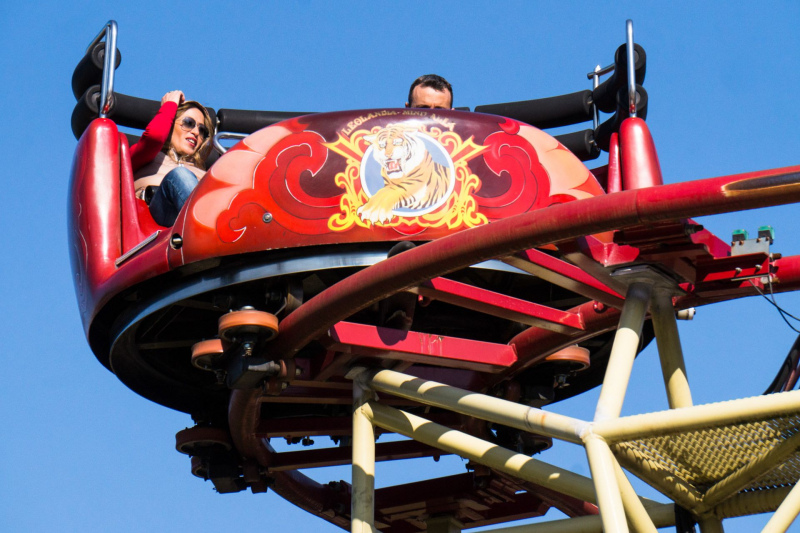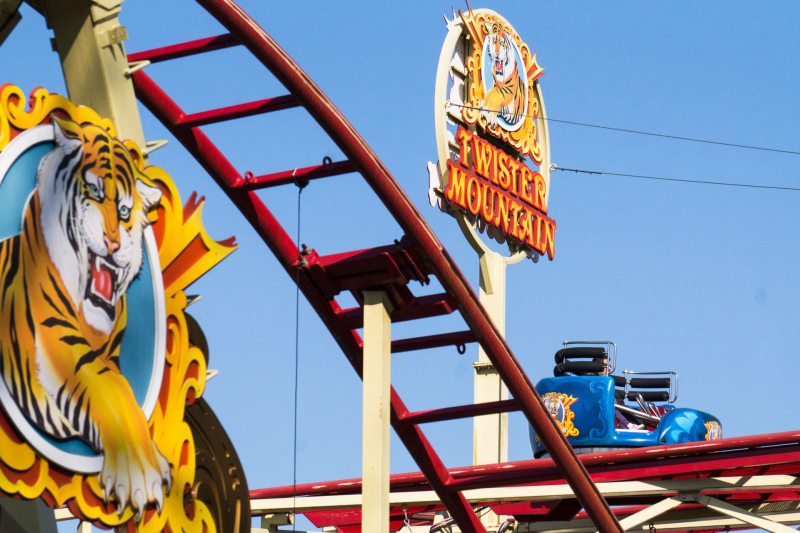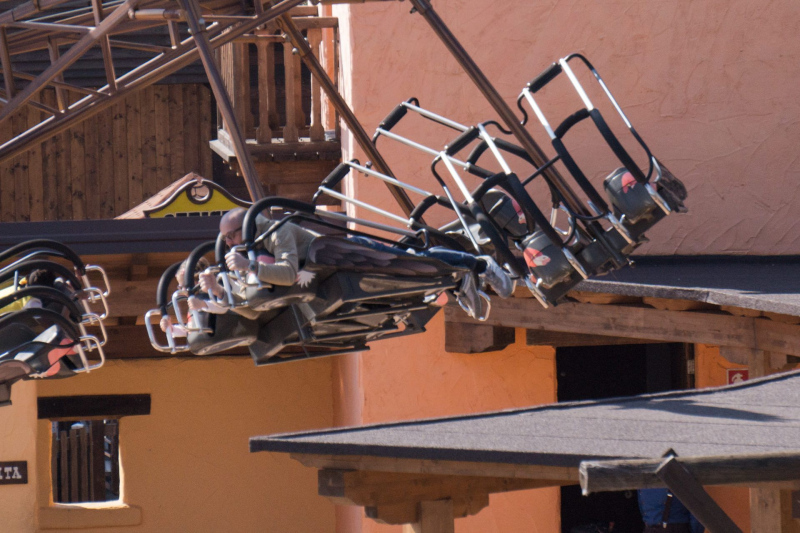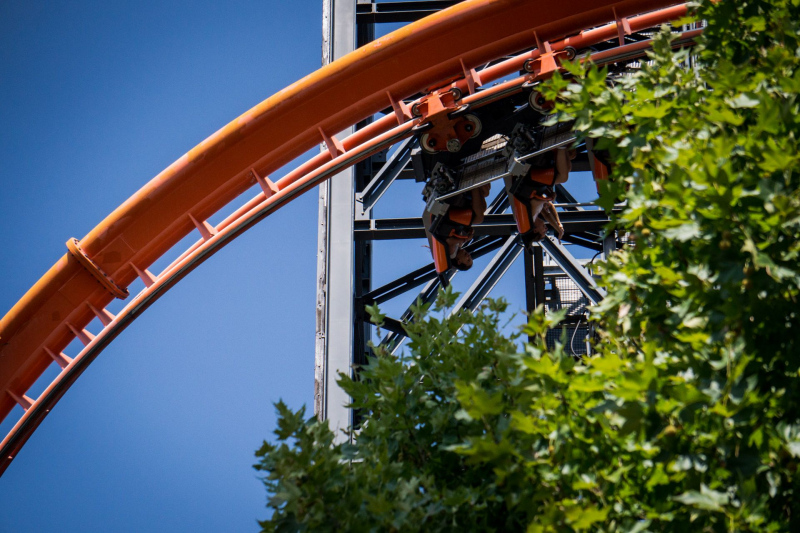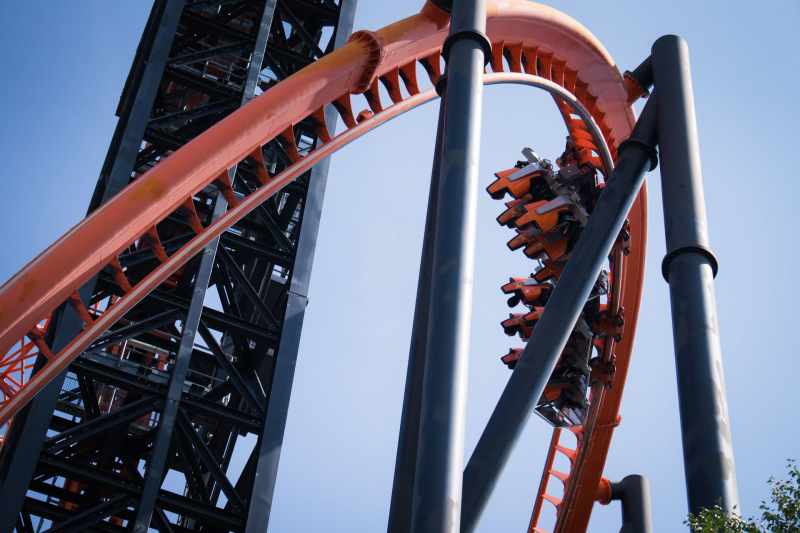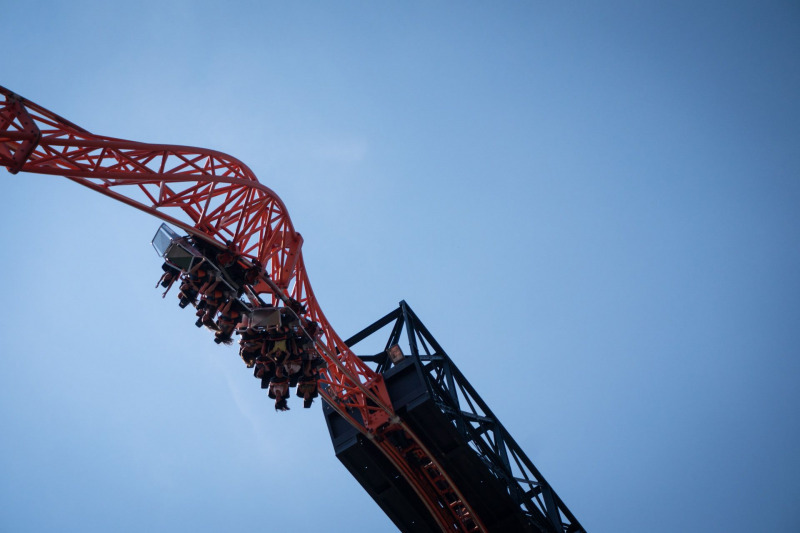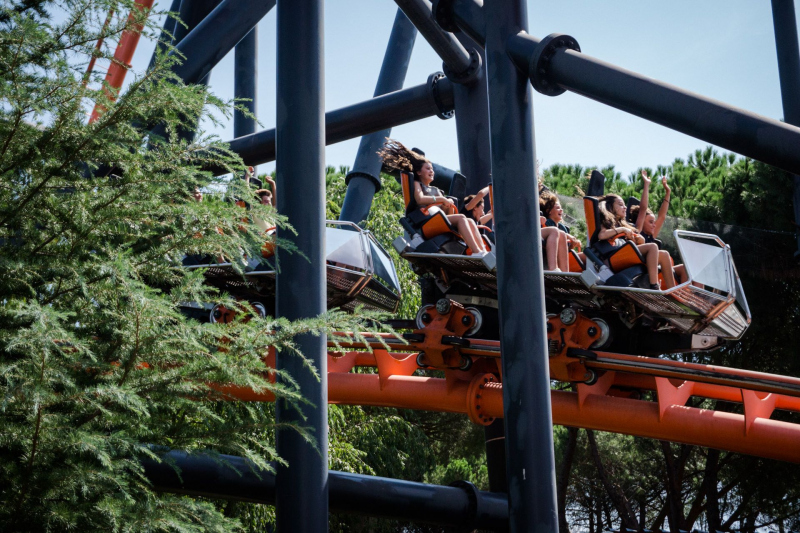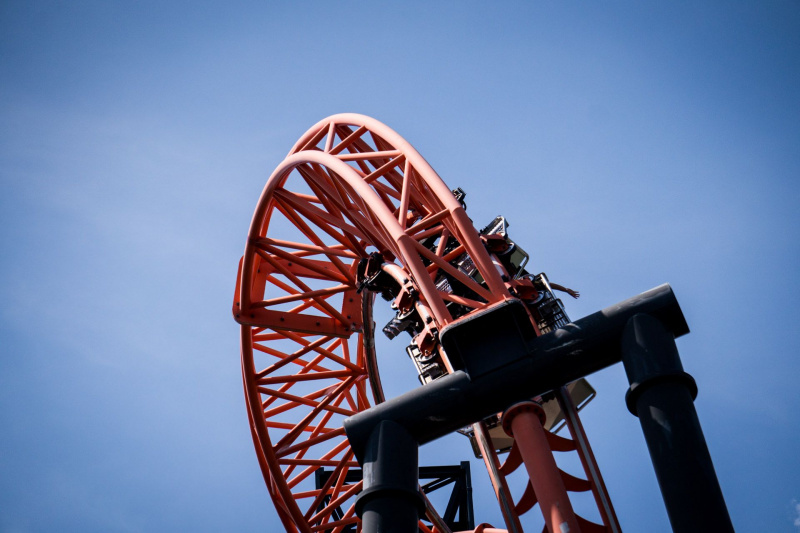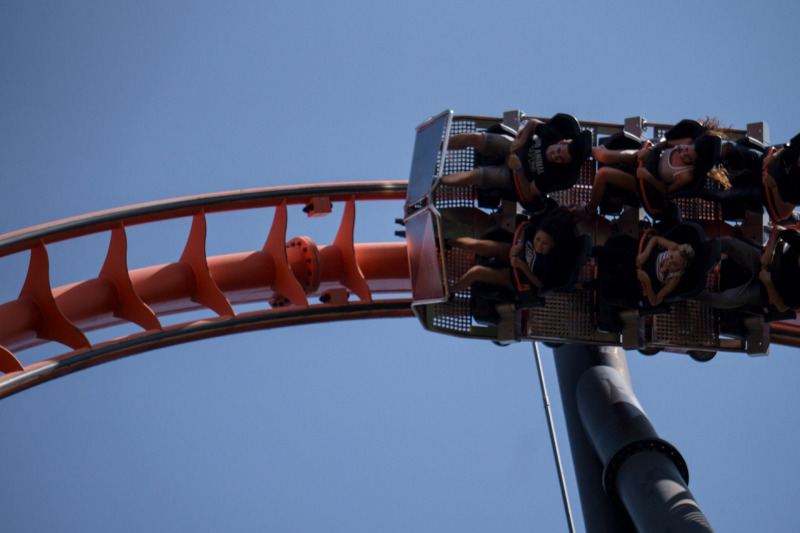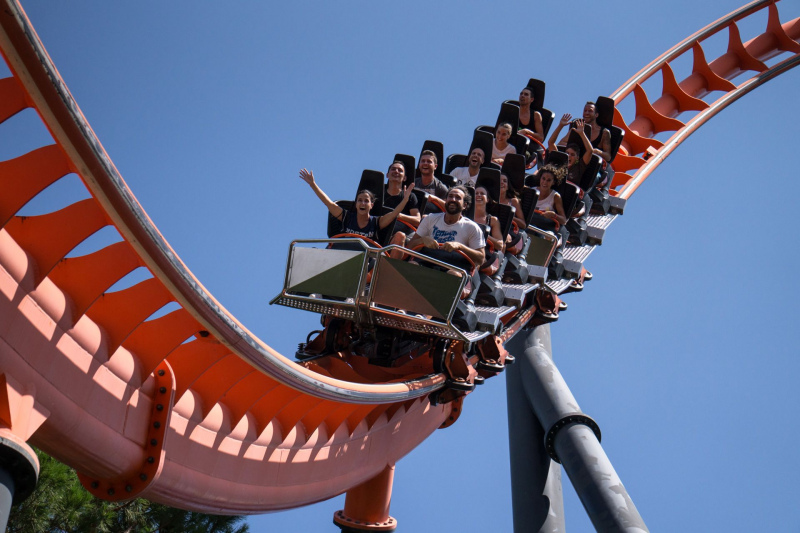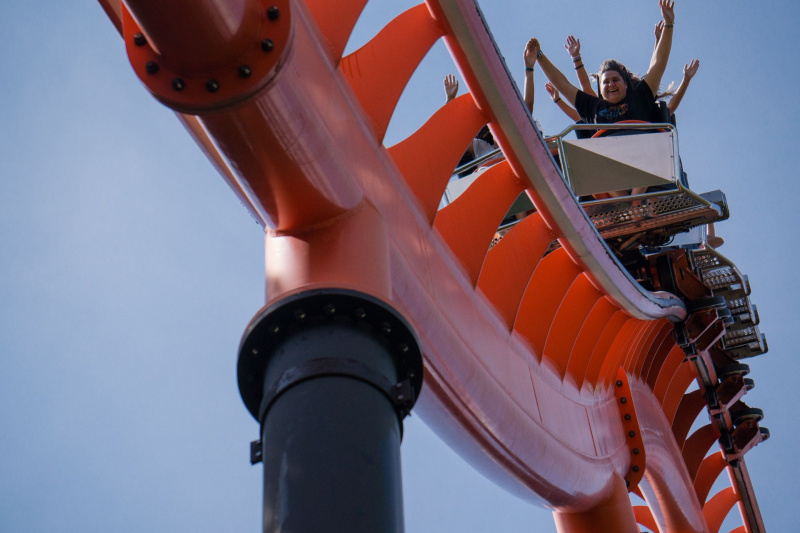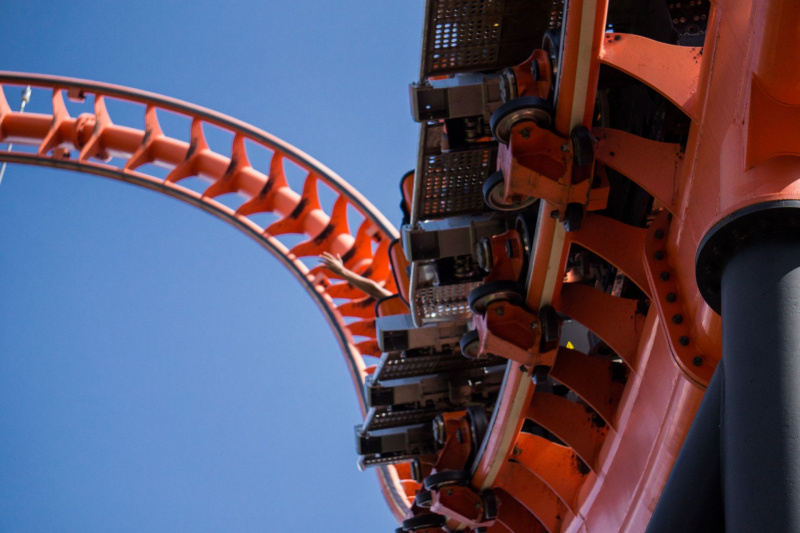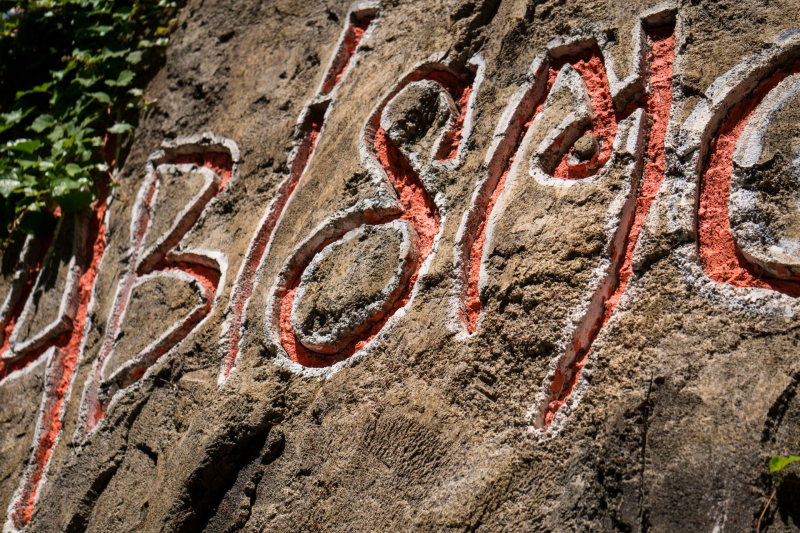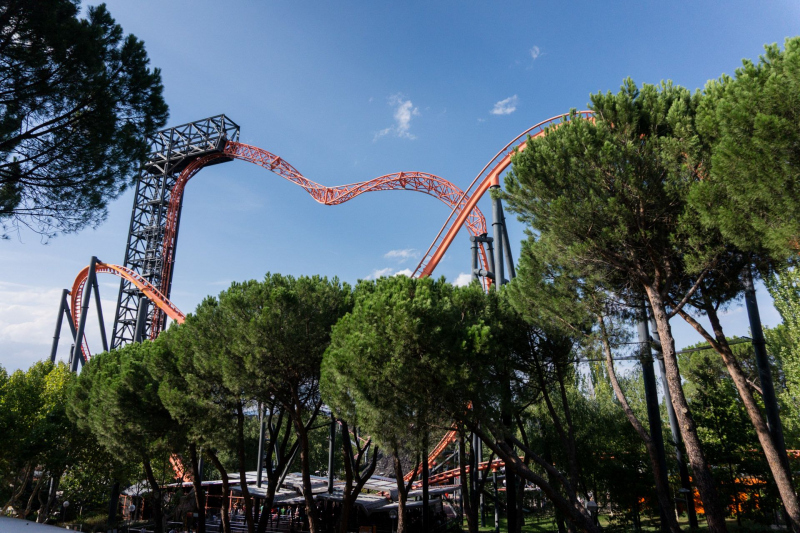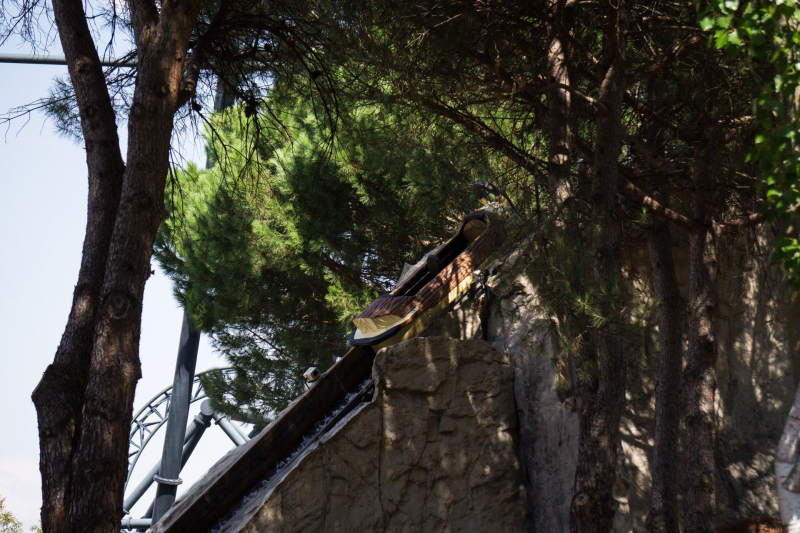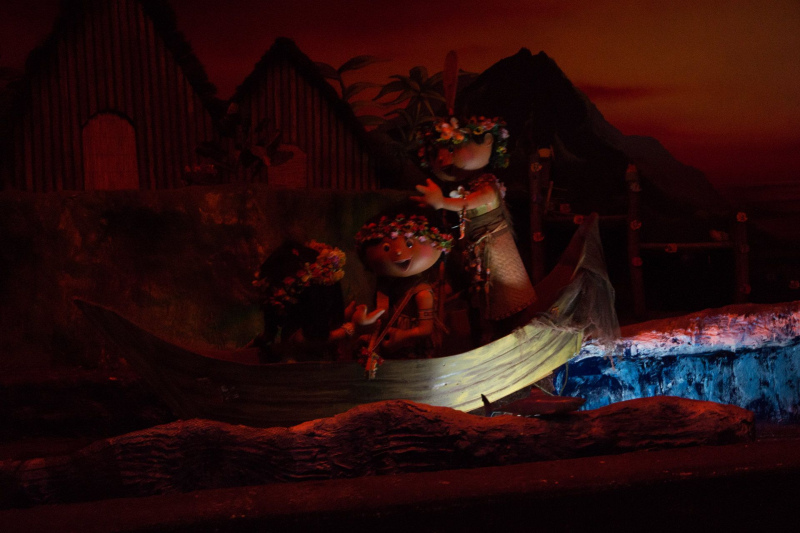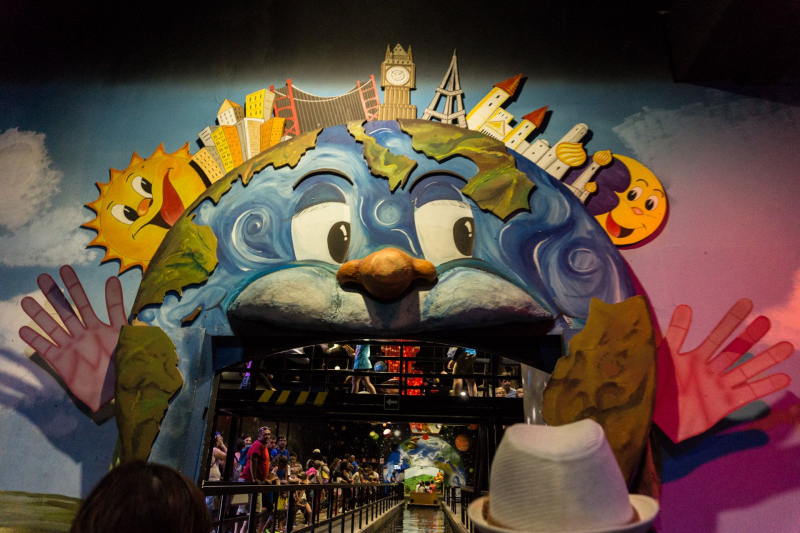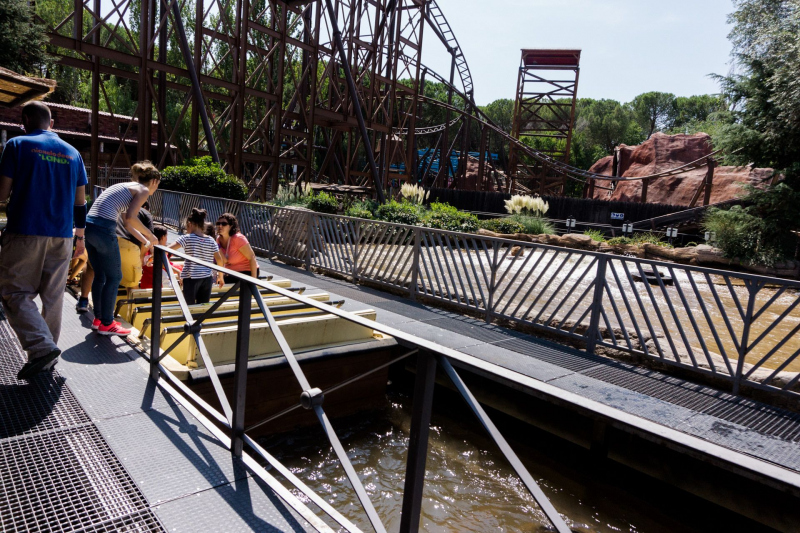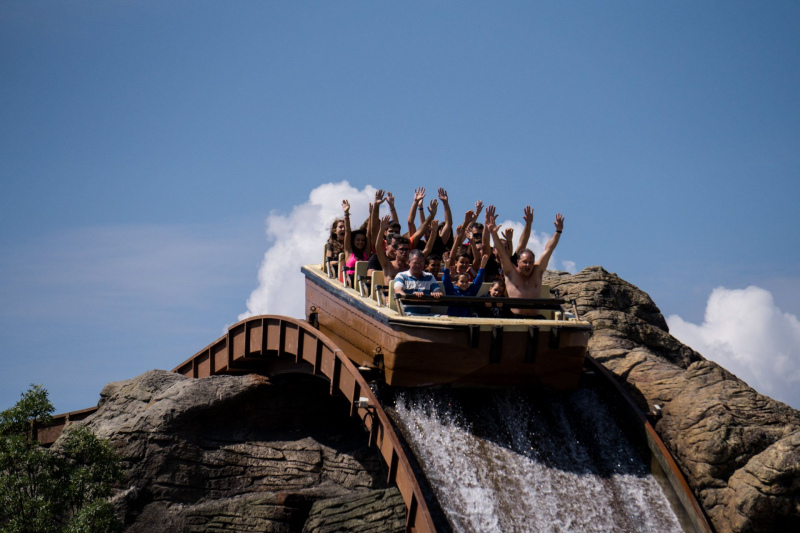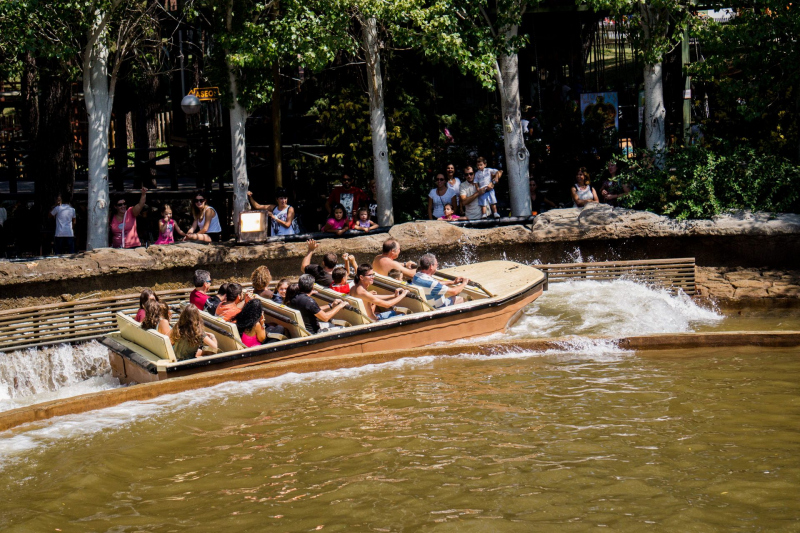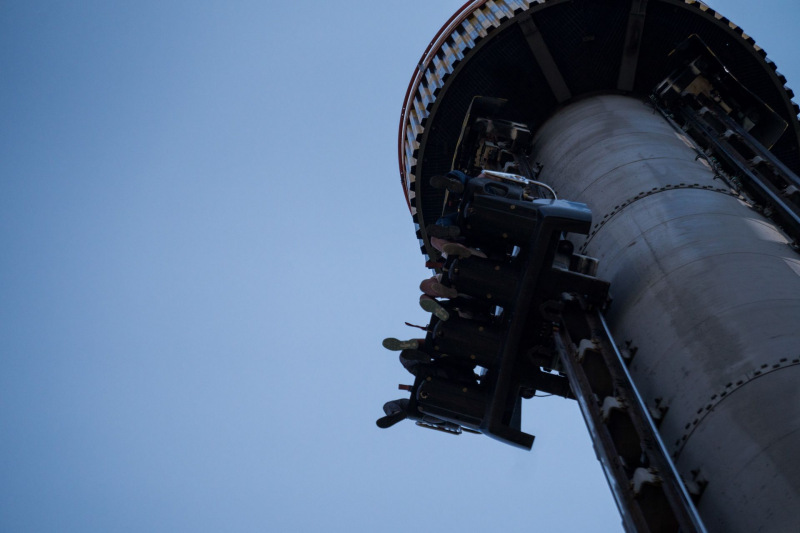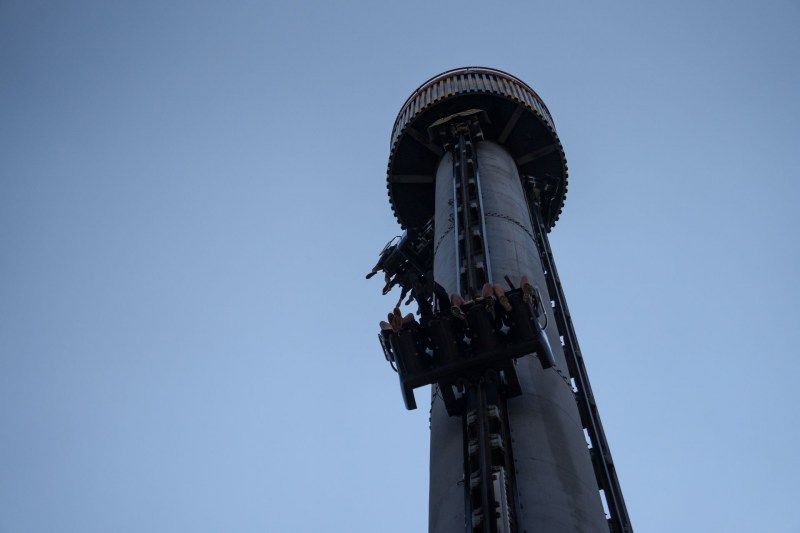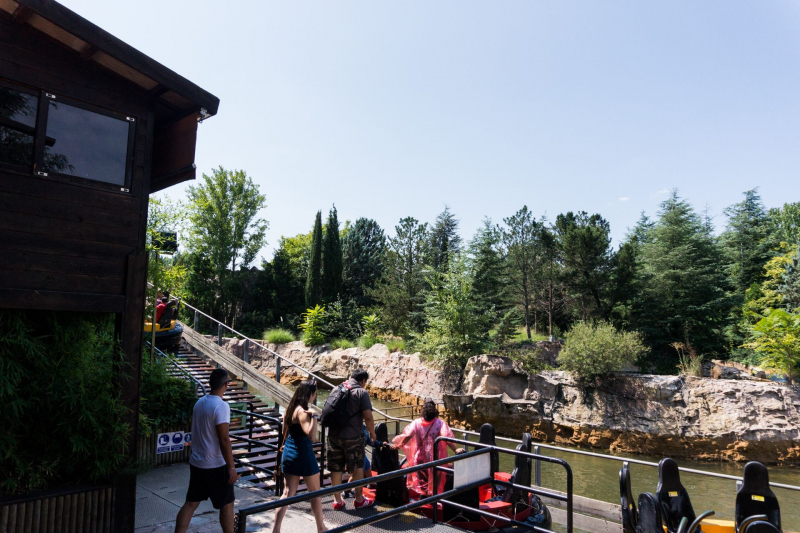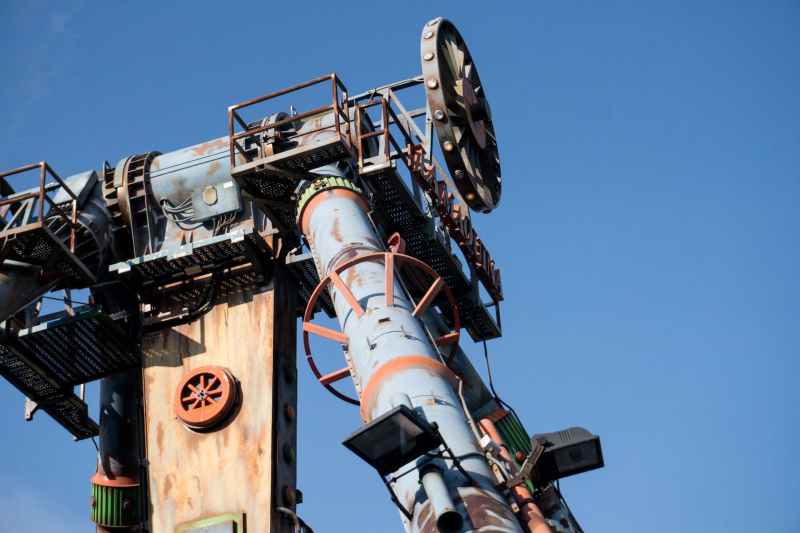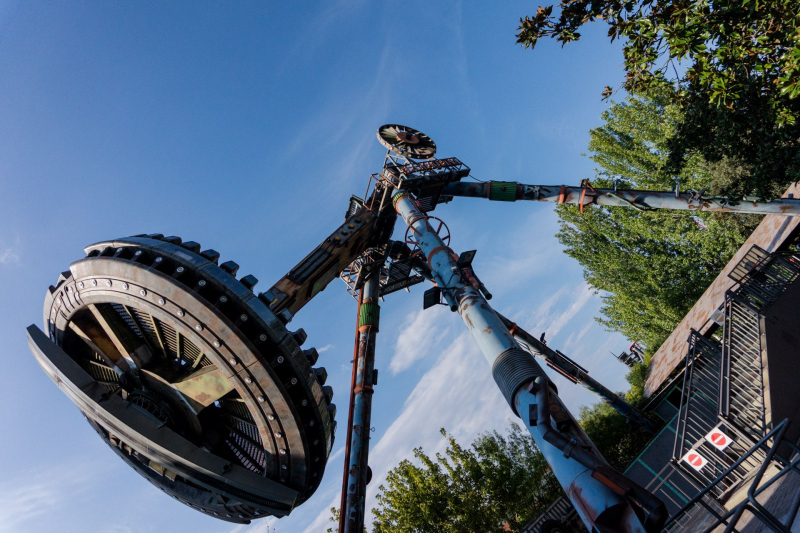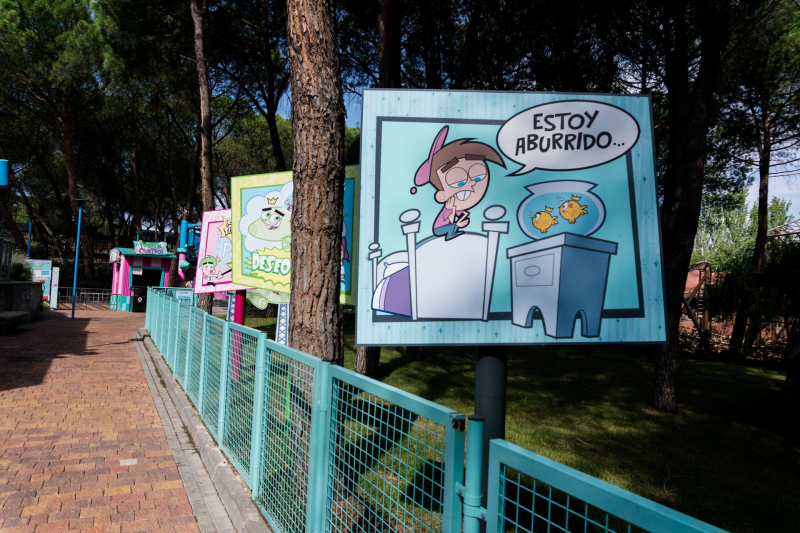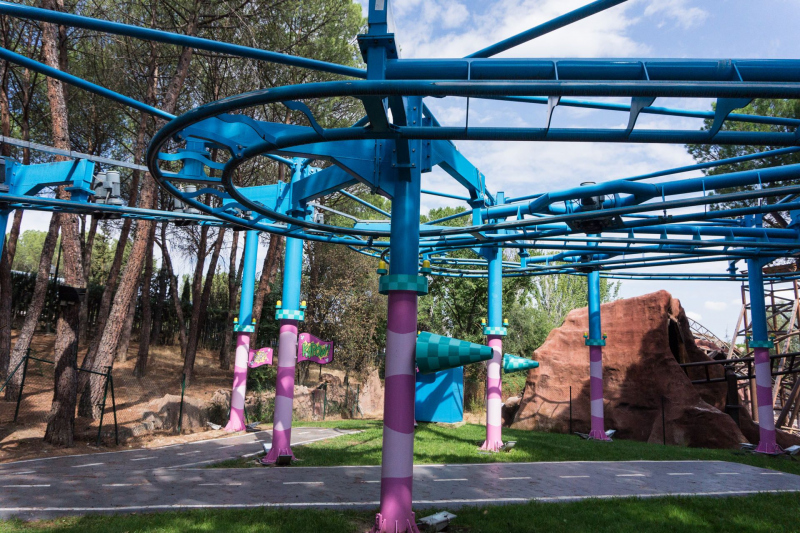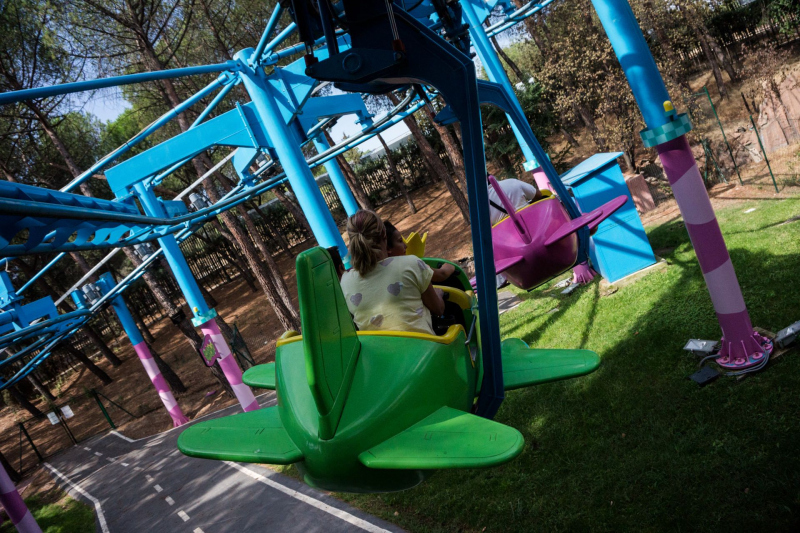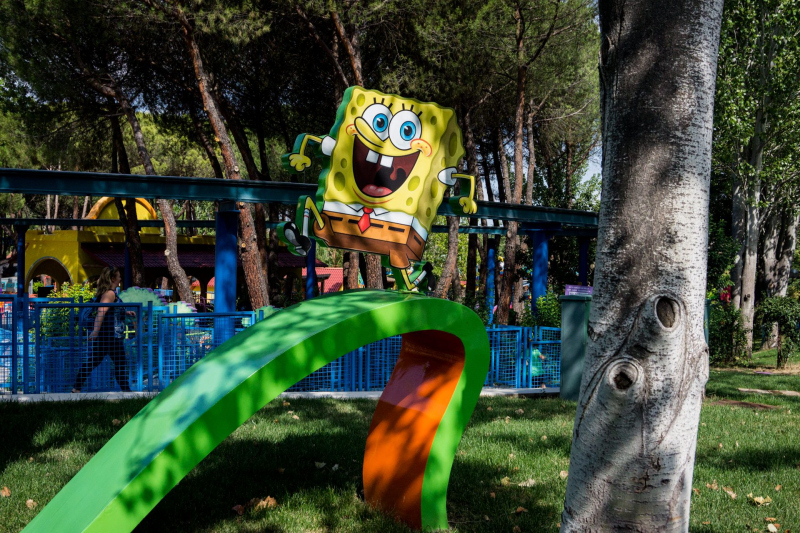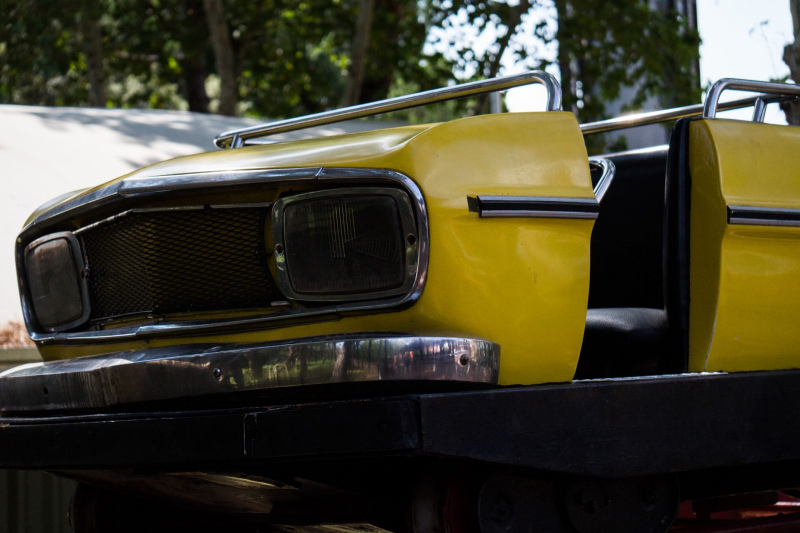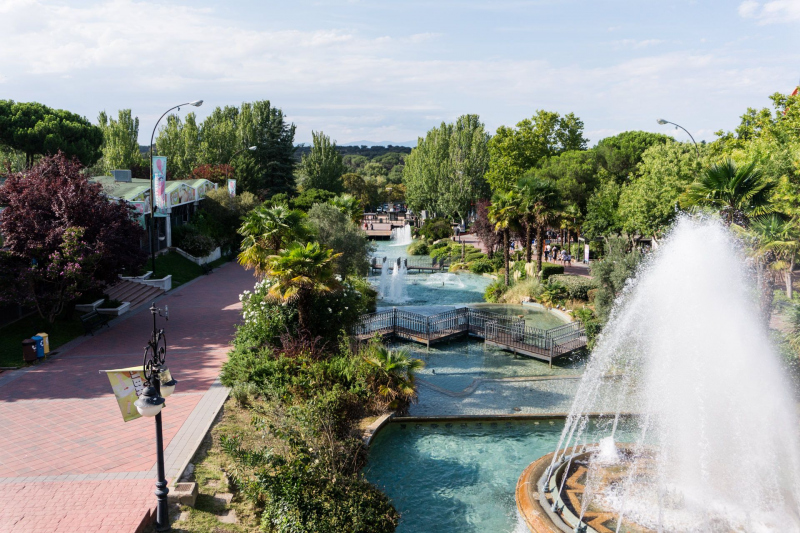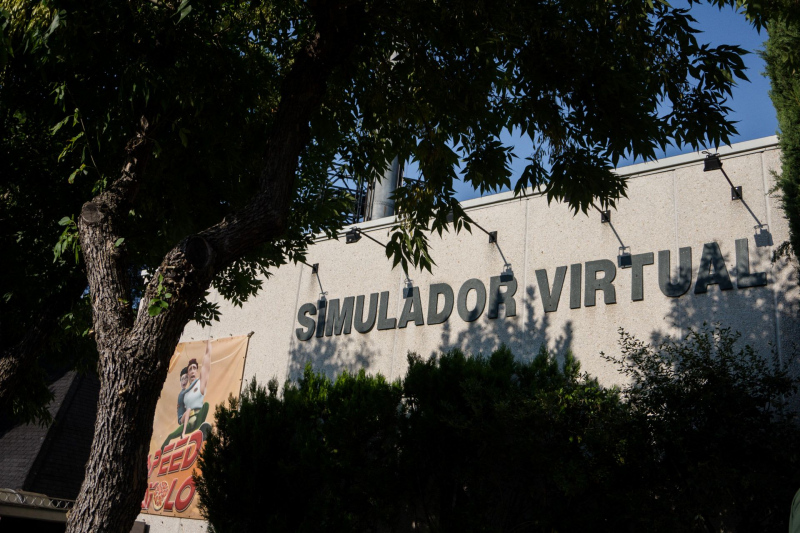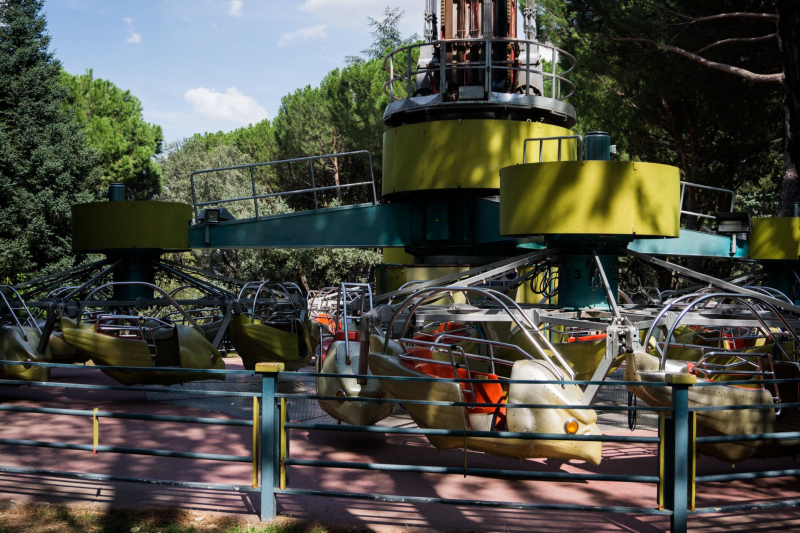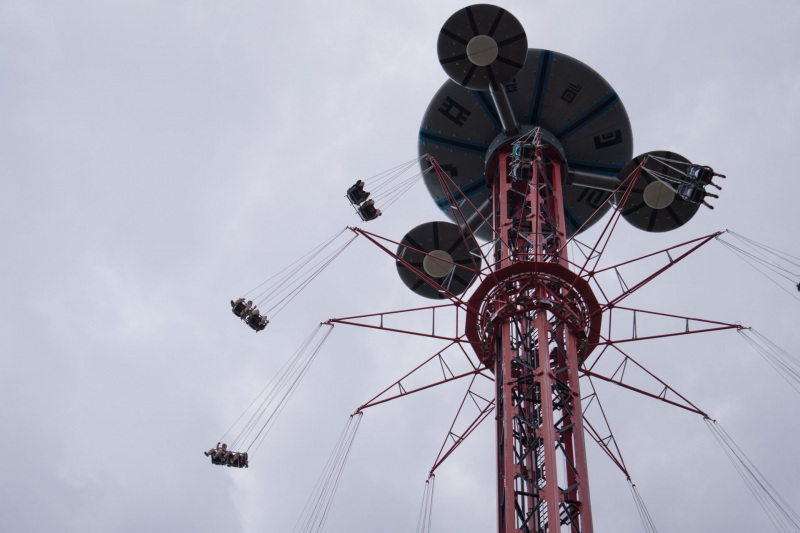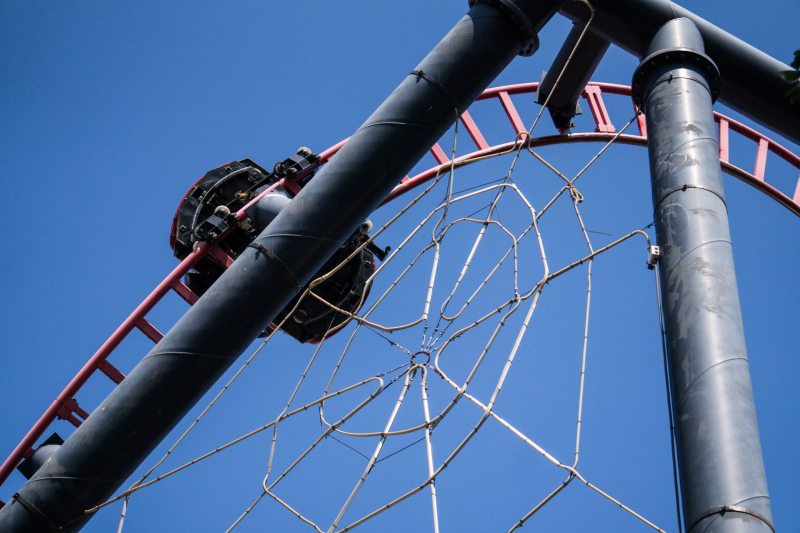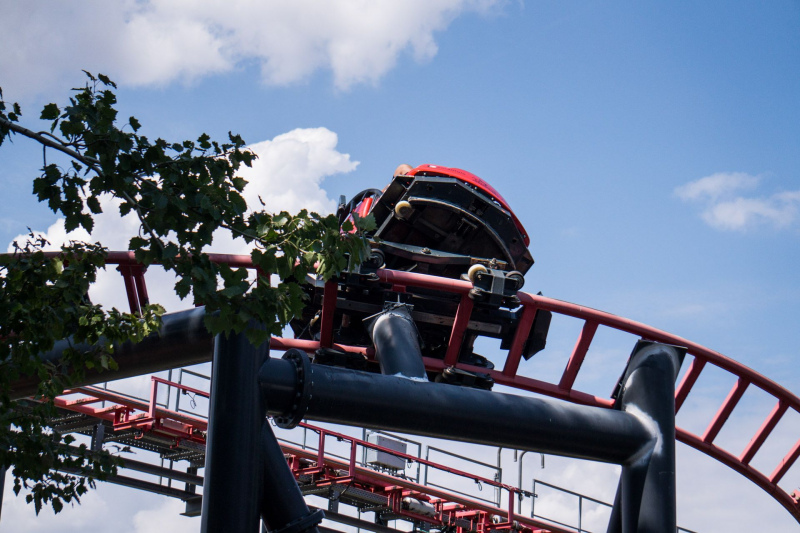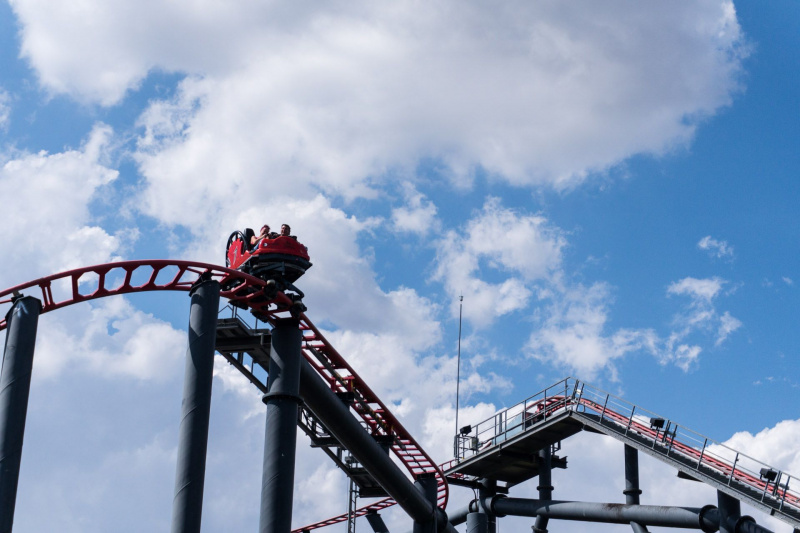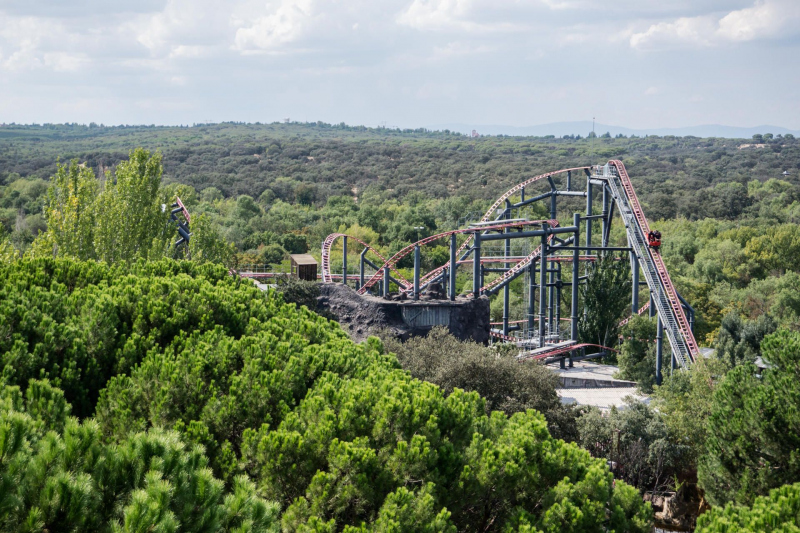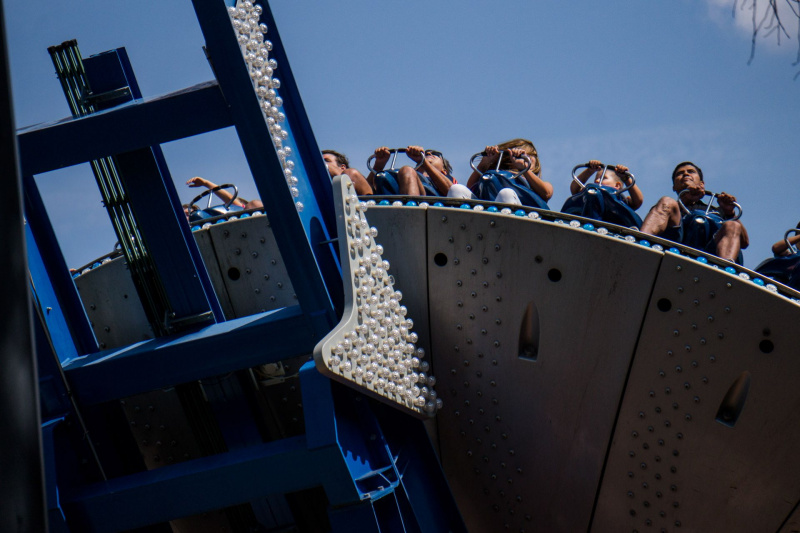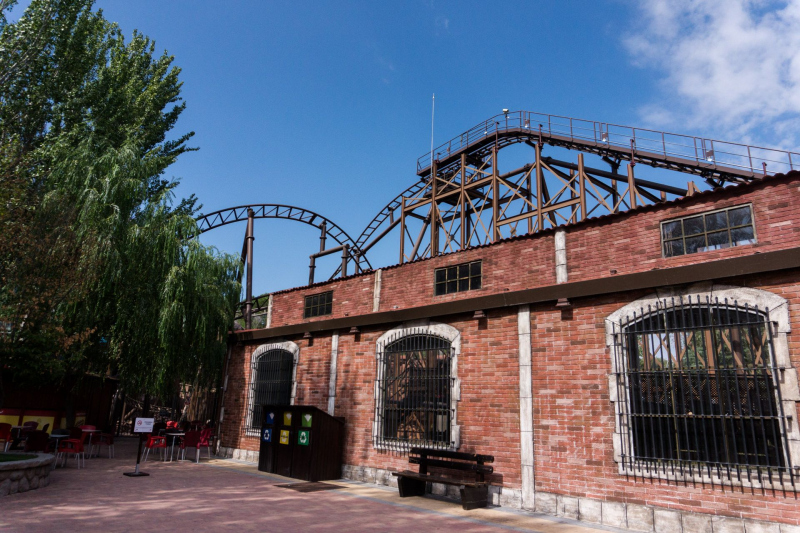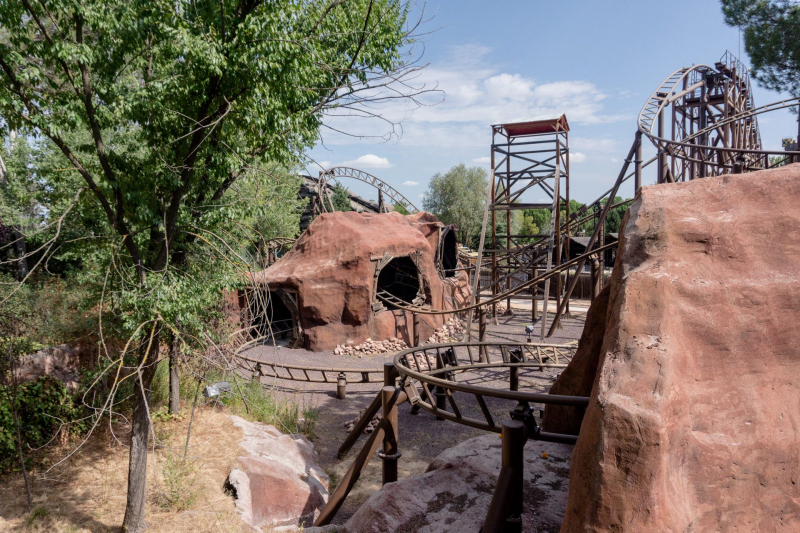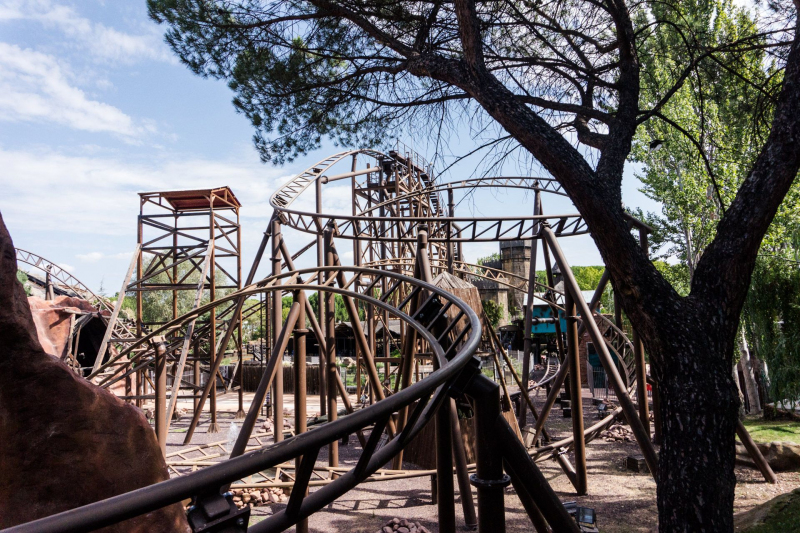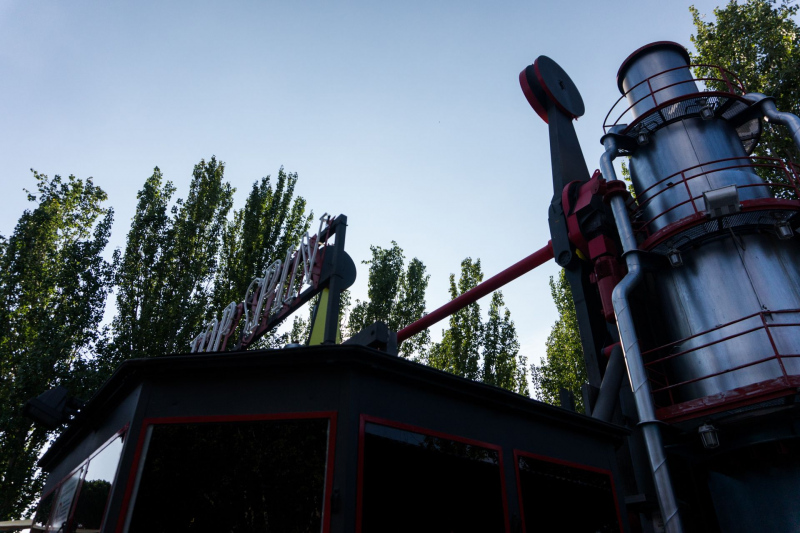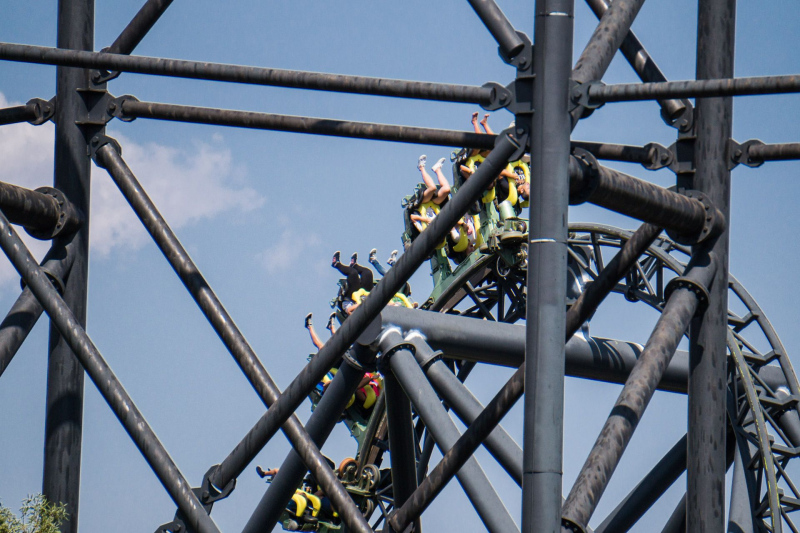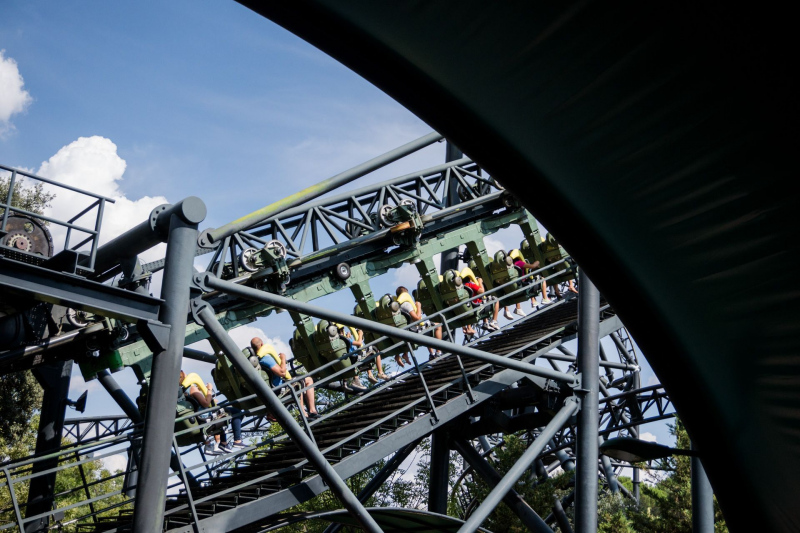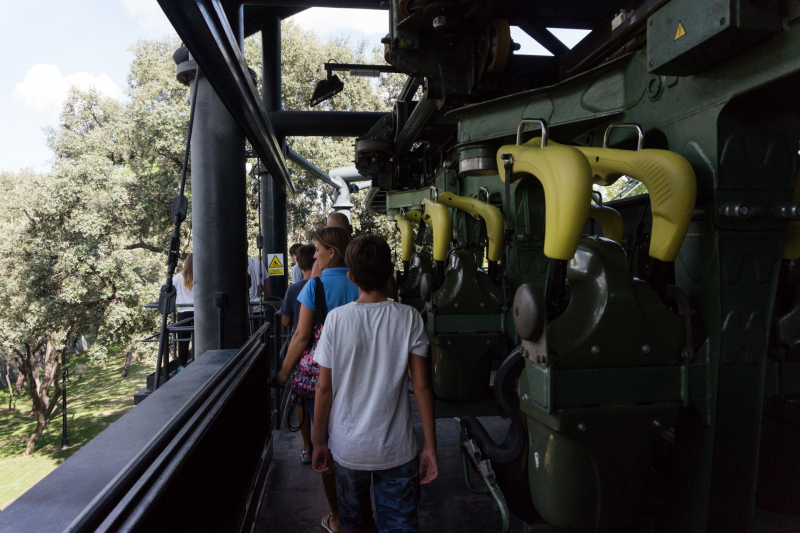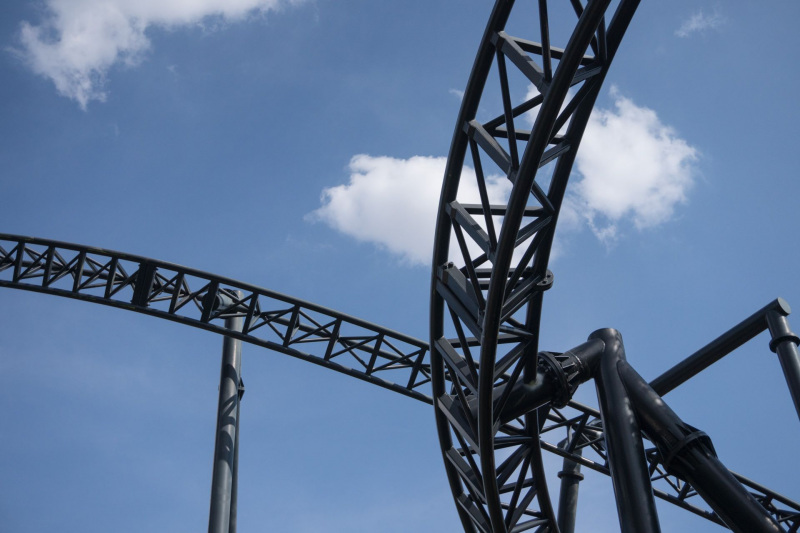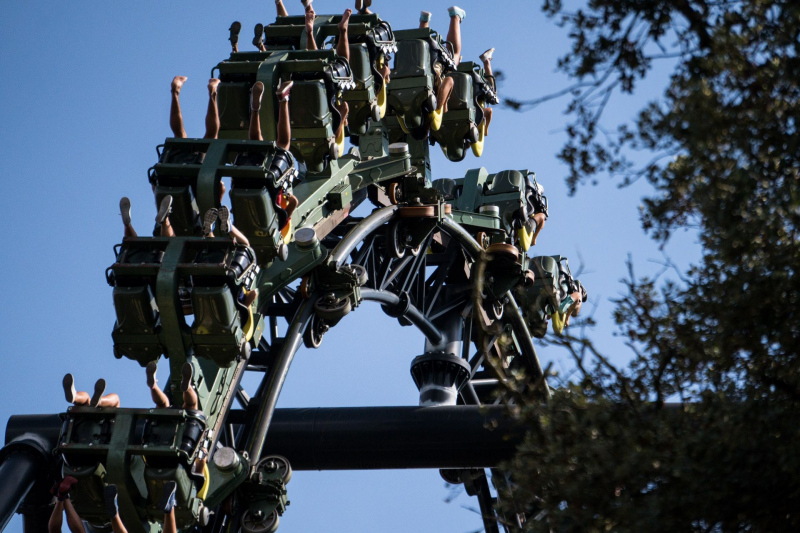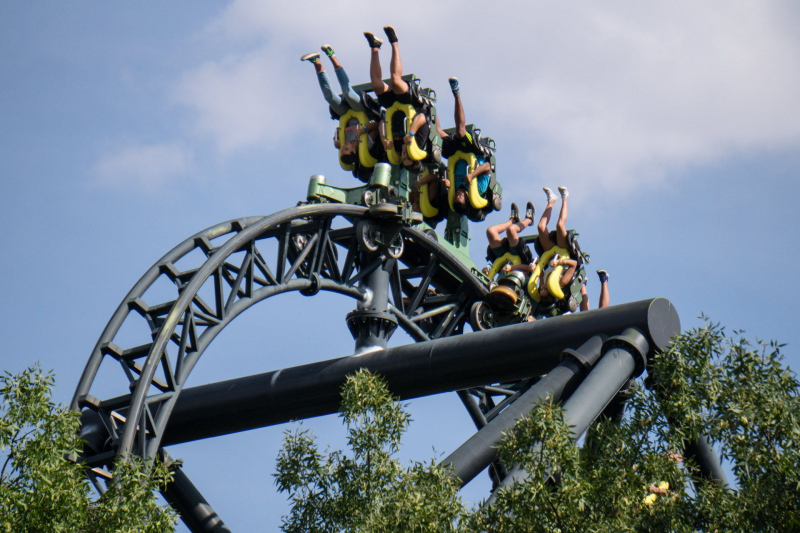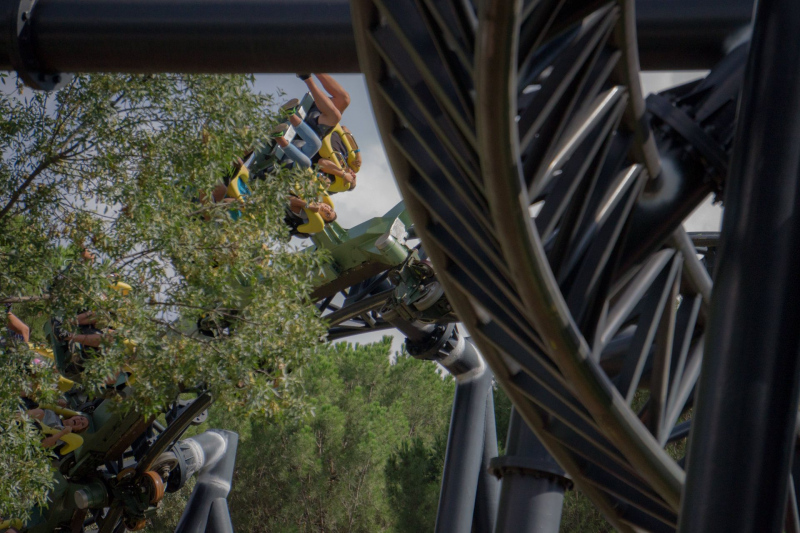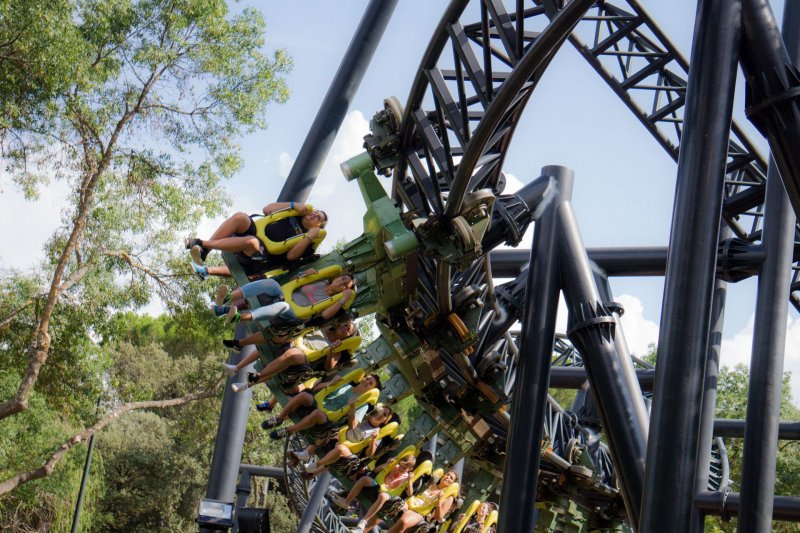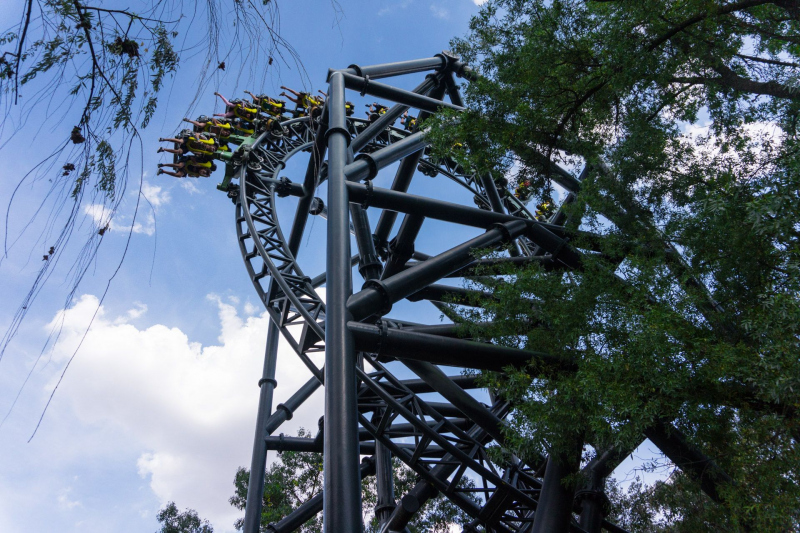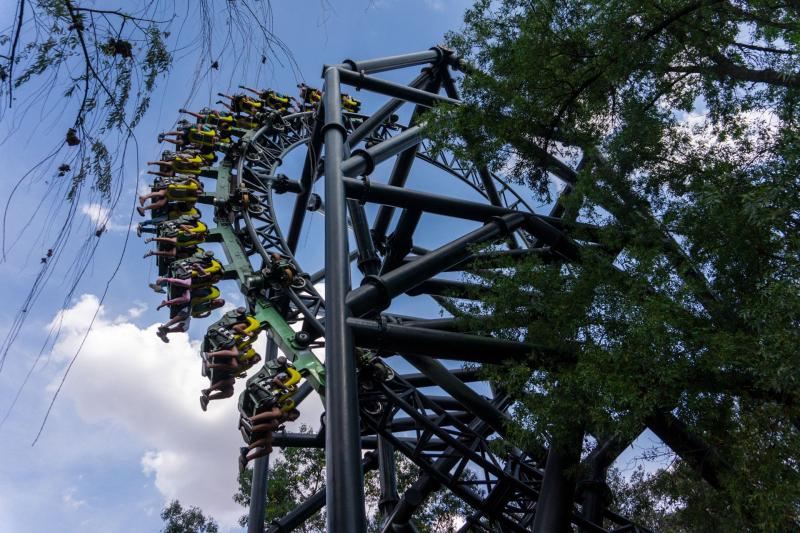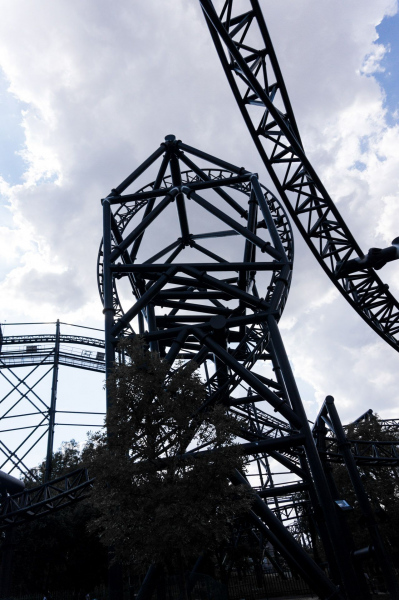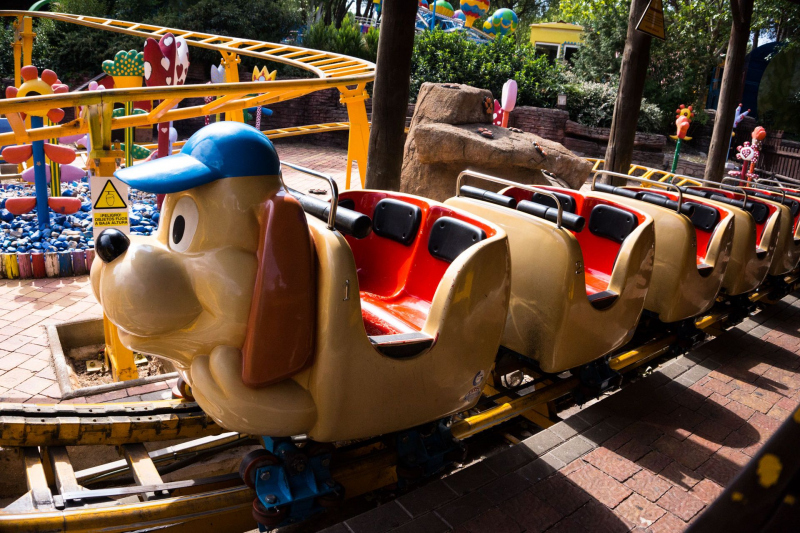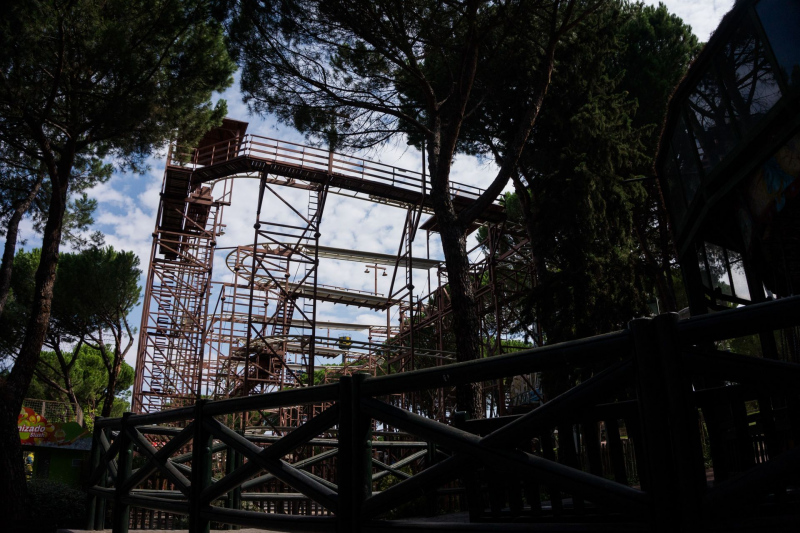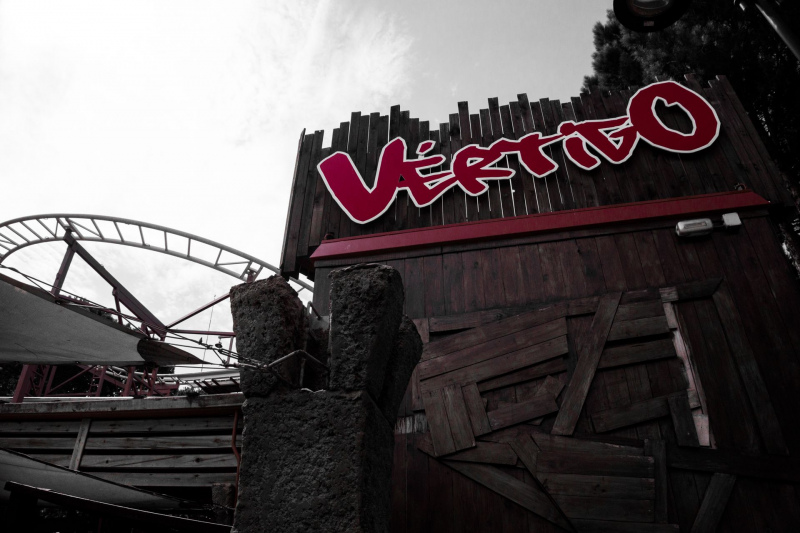Gardaland
After a visit to Disneyland in Anaheim, California in the early 70s, businessman Livio Furini decided to create his own park. At that time no place seemed more suitable than an area within sight of Lake Garda, after all this is the first lake of its size that tourists, coming from the Brenner motorway, have been occupying since the late fifties and have not given it away since then; finest Mediterranean feeling without the Mediterranean Sea, of course. With the help of some local entrepreneurs, Gardaland opened its doors for the first time in 1975 and has been growing steadily ever since. In 2006 the British Merlin Entertainments Group bought the park for 550 million euros. Two hotels a few kilometres away complete the offer.
Arriving at the car park, the crowd of people promised a pleasant day’s visit, but this was not necessarily reflected at the cash desks and at the entrance. Really stupid German park guests in their teens, who had probably never been to an international amusement park before, also delayed the ticket purchase immensely by explicitly asking for two Eintrittskarten. It’s very easy to do so, if you order the tickets in English, put down your Merlin 2:1 voucher and pay the money. Afterwards they wish you a wonderful day in finest German. With the tickets in hand, we went straight into the park, where I had to wait for Dominik, as he hadn’t been able to close the gap behind an Italian family. In general, the access area to Gardaland is somewhat disadvantageously built.
Fantasy Kingdom
Right at the beginning you are spoilt for choice by walking through two children’s areas. You can choose between the medieval area of Gardaland, where there is a horse carousel and several playground equipment, and the Fantasy Kingdom, where you can find Prezzemolo and his friends, the park mascots. They are cult in Italy and in 2002 they even got their own TV series, incidentally one of the early projects of the Rainbow studio (Winx Club, Huntik and some more, whose licence is now used in Rainbow Magicland close to Rome), with 26 episodes in total. Prezzemolo, which translates as parsley in English, is a shy dragon who, while eating pizza topped with strawberries, becomes He-Man and helps his friends. The series is actually not bad, although I don’t understand a word of Italian, and it shapes the style of the theme area immensely.
The centrepiece of this is an artificial tree, which, similar to the Cabane des Robinson of the Disneyland Park in Paris, is accessible. Inside there are some rooms inhabited by Prezzemolo and his friends, which are very nicely decorated. Continuing upwards you climb a staircase until you reach the balcony in the artificial treetop. Up here you can have your picture taken with Prezzemolo or simply enjoy the view of Gardaland and nearby Lake Garda. A staircase around the tree leads you down again. It gets quite interesting in the cellar of the tree, where the Magic House is located.
Magic House
After entering the entrance hall to Prezzemolo’s happy home, a magician appears and speaks to the visitors. The room in which you are currently located is extended. Prezzemolo is greeted with great excitement in his living room and explains that the strange voice that is heard from time to time means that there are hardly any visitors left. Suddenly strange things happen and the magician speaks again to the guests of the house. Now the restless ghost explains that this was once his laboratory and he has got used to living in the same house with Prezzemolo a little bit, but now he declares it to be his own. He then invites the visitors to a small illustration of his powers, in which he turns the house upside down. On the way out, Prezzemolo tells his visitors about a strange dream in which his house and a magician played an important role.
It’s kind of cool to stand in front of a huge building and take a lift a few meters down to the basement to visit a completely underground Mad House. Unfortunately the comic look of the drum robs the illusion a little bit, here you could have achieved even more with additional effects. The music is coherent and the Italians listen attentively to the story, which makes it easy to follow the story, at least in theory.
The rest of Fantasy Kingdom looks like the prototype of all the more modern children’s kingdoms. Similar to the younger Sesamo Aventura from the Spanish Port Aventura near Salou, there are other rides, e.g. a quite neatly designed tractor ride, a small monorail and other smaller carousels in an elaborate design.
Raptor
A little above this area is the entrance to Raptor, the prototype of the Wing Coaster from Bolliger & Mabillard. Similar to the notorious roller coaster Nemesis of the English amusement park Alton Towers, this ride presents itself as an alien, which was found by chance during construction work in the park. While Nemesis was tamed into a steel-like structure and has been used as a ride for the towers’ guests ever since, the Genetix Initiative, a paramilitary organisation, tried to tame the found creature in the specially built X-Labs in Gardaland. But all attempts failed and Raptor succeeded in breaking out.
In a short left-hand bend, the train leaves the station and immediately climbs the lift hill. While the newer versions of the ride slowly turn their passengers by 180°, the Raptor plunges into the depth, which leads to unexpected airtime, especially in the back rows. Powerfully the train crosses the first valley and then makes a steep turn to the left. Without any rest, the alien falls to the ground again and doesn’t hesitate to use its power. In a zero-g roll you are now turned upside down for the first time, leaving it in a left turn. Now you cross the entrance portal of the ride on a hill, whereupon the train throws itself into a curve close to the ground, which serves as an introduction into a somewhat elongated corkscrew. A right-hand bend close to the ground, passing the lift hill of the ride, follows, but is immediately replaced by another left-hand bend. This leads into a very long in-line twist, a straight roll, which is equipped with some Near Miss elements. Shortly afterwards we land in the braking section of the track, where we can spend some time in the now tightly fitting restraint waistcoats. Another left turn brings us down to the hangar level again.
Although Raptor is the smallest representative of its kind with a height of 33m and a length of just 770m, the ride is one of the better ones, as long inversions are accompanied by tight curves and forceful valleys. Although the Near Miss elements are negligible, the ride in Gardaland surprises all the more with its rather unconventional first drop (it’s strange that through the whole hipster movement with its unconventional mainstream, something absolutely classic can now be called unconventional, as nobody uses it anymore). Compared to the other European rides, Raptor is clearly ahead due to its more dynamic ride, especially since The Swarm from Thorpe Park, England, has lost all of its driving sophistication again due to the renewed rotation of the two rear cars.
4D-Adventure Cinema
A few meters further on you will find the Spectacular 4D-Adventure Cinema, which contains a simulator with quite long rows made by Intamin. The ride was opened in 1990 under the name Cinema Dinamico as the first of its kind in Europe and showed up to 6 different films per day, including a film showing the wooden roller coaster Colossus from the amusement park Six Flags Magic Mountain. In 2001 the theatre was rebuilt, whereupon 3D films were shown, which were lifted into the fourth dimension by the additional movements. As always with such attractions the quality of the films varies immensely, mostly the movements of the passenger carrier are jerky and moreover asynchronous to the image, which makes them a guarantee for whiplash injuries of any kind and motion sickness.
I Consari
A little quieter, but by no means less spectacular, is the dark ride I Corsari. In defiance of the imminent opening of the Euro Disney Resort in Paris in 1992, Gardaland created the most expensive attraction in the world at the time. And so it is hardly surprising that the already very limited space of Gardaland was optimally utilised by an additional underground hall. Access to the dark ride is on the deck of a huge galleon, in whose hull the queue including the station is located.
Hired as sailors of a huge galleon we immediately try to escape the cruel captain Jason Montague in two nutshells. Our way leads us directly into the jungle, where dangerous animals and dead pirates make us understand the cruel reality of our business. A parrot tries to keep us from our goings-on, but we know that returning to the captain will be no less harmless. In a cave we meet a rotten ship whose restless crew is still among us. We narrowly escape and end up in a supposedly safe environment. The pirates here seem to be nice and friendly, but above all, they like to drink. We are advised to turn left and through a sewer system we end up in a swamp. If this environment was not deadly enough, we are attacked by a sea snake with human appearance in the next moment. But even here we manage to escape and are immediately rewarded with a legendary treasure. Freshly hanged pirates do not bode well and so we are not surprised when a huge galleon sounds the order to attack. It is our old team leader Captain Montague, who not only destroys the fort next to us, but also guides us into the depths of the sea.
I Consari can easily be called the best pirate theme cruise in Europe without devaluating the Disneyland classic Pirates of the Caribbean too much. The ride itself is extremely harmonious and the animatronics used are impressive, as is the entire set design.
Sequoia Adventure
Next to the log flume Colorado Boat, which was built in 1984 and is a rather classic ride with two shots, is the entrance to Sequoia Adventure, a truly special roller coaster made by S&S. The layout of the Screaming Squirrel promises a very exciting ride with three, slightly longer, overhead passages.
Once the manufacturer’s typical airy brackets have been set and locked, the car starts to move and immediately rolls towards the curve, which grips the car over two raised rails under the arms and lets it slide onto the actual track. Here, the trolley couples back to its original rail profile and is immediately transported upwards in the lift. Once at the top, the car completes a short straight line before it is braked and transported very slowly over the hilltop. In the so-called saxophone element, which actually looks a bit like the musical instrument, you drive back the straight line upside down before you are slowly turned around in a turn. The whole game is repeated two more times, whereby after the second saxophone it goes up a little bit to get to the correct starting height for the third saxophone. Towards the end another turn leads the car back to the station.
Sequoia Adventure is a wonderfully wacky roller coaster that celebrates its longer overhead passages virtually by itself. All these passages are quite pleasant, but the turns are unfortunately not without jerks, which is especially noticeable after the second saxophone with its free cut. But the ride itself is fun and with its wonderful different layout it is a real eye-catcher.
Magic Mountain
In 1981 the Dutch amusement park Efteling presented Python, the largest and most exciting roller coaster in Europe. Two years later, Heide Park Soltau introduced Big Loop, a similarly exciting but higher ride, which attracted a lot of attention. Gardaland also recognised this trend and in 1985 offered Magic Mountain, the most exhilarating roller coaster in Italy at the time, also modelled on the Carolina Cyclone of the American amusement park Carowinds.
As with Python, the train leaves the station in Gardaland on a small gradient, followed by a left turn. Shortly afterwards the train hooks up to the lift chain, which takes it to a starting height of 29m. This is followed by a small gradient and another 180° left turn before the train races down the track. The colourful train advertising for Coca Cola now passes through a very powerful valley and immediately passes the first loop and then the second loop of the ride. On a straight line the train gains a bit of height and shortly after that it takes a curve. This brings the train up to the starting height of the corkscrews, which you enter at a remarkable slant. While the wagons are screwed through this, the world is turned upside down two more times. After a small hill, you now complete an upward helix around a fountain, after which the braking section is waiting.
Magic Mountain is a great older type of roller coaster, which doesn’t have to hide from newer rides due to its truly intense dynamics, even though both trains were only half occupied. (One train with three cars, the other with four). The ride itself runs faster than its Dutch counterpart and therefore has a lot of pressure from the beginning, which is transferred to the passengers as well as to the track. Vekoma’s new trains generally enhance the ride, but the strange Coca Cola branding and the even stranger clearance on the day of the visit detracts from it.
Kung Fu Panda Academy
Behind the big looping roller coaster, the Kung Fu Panda Academy in Gardaland is currently under construction, which will feature the Fabbri Spinning Coaster Kung Fu Panda Master, the redesigned tea cup carousel Mr. Ping’s Noodle Suprise and the Kung Fu Panda Chi School.
Ortobruco Tour
In the farthest corner, still behind the entrance to the monorail, the cog ride and the toddler carousel is the entrance to the Ortobruco Tour, probably the world’s largest Big Apple. The ride opened in 1990 with a much shorter layout, but this was extended to its current length in 1993, probably also for capacity reasons. From a technical point of view, the Pinfari roller coaster is quite impressive due to the number of friction wheel lifts, as well as the fully automated trains.
After a right-hand bend, the train goes through a longer straight line, whereupon the first lift hill follows after another right-hand bend. At the top, the train passes a left turn and slowly picks up speed. Over hill and dale or the typical waves of every Big Apple the way to the next curve is now overcome. After the turn, the second lift follows, whereupon a downward right helix is added. This is followed by the third lift above the queue, which merges into a right-hand bend. In its original version, this lift led the train into the station, but in the current version it leads the train into the fourth lift. Now one circles the building of the toddler carousel by about 90°, completing a straight drop and a straight gradient after a slightly bent valley. Immediately you go downhill again in another right helix. You leave this one in a slight incline, which here also merges into a lift. In a helix to the left the train makes the subsequent descent. Here too, the speed of the train is kept alive by additional friction wheels in the following ascent. Now the train goes through a right-hand bend, which is then transferred to a left-hand bend after a slight bend; shortly after that the station appears.
The Ortobruco Tour is a nice children’s roller coaster, which always gives the feeling of sitting in a bigger Zierer Tivoli than in a Big Apple, because the speed and the track length suggest it. The ride is at least good and the decoration, which interestingly comes from the former Gardaland Waterpark near Milan, is quite impressive.
Ramses Il Risveglio
The first major dark ride in Gardaland opened in 1987 with Valle dei Rei, which, due to the seemingly endless popularity of interactive dark rides, was redesigned into Ramses Il Risveglio in 2009. The ride suffered the same fate as Duel from Alton Towers and Tomb Blaster from Chessington World of Adventures.
The story is now about strange phenomena that occurred during restoration work and an evil that wants to subjugate the world. We already had a similar storyline with Raptor, but in contrast there are robot mummies and finest metal sounds. If the typical sound of the guns would not be there, as for example in this year’s redesign of Tomb Blaster, I would really enjoy the ride. All in all, the ride is of course well worth seeing and the ride system by Pinfari is well worth experiencing. The general design is outstanding and the futuristic metal mummies are a pretty cool idea.
Below the Gardaland Theatre is the 4D cinema of Gardaland, where an Ice Age film is currently being shown. Normally this is reason enough to stay away from the cinema, after all the first Ice Age 4D film was a poorly edited version of the otherwise brilliant third cinema adventure around Manny, Sid, Diego and Co., but now the Blue Sky Studios have released a 4D film especially tailored for Scrat and it is really good. Scrat finds a time machine and travels through several eras, of course always in search of his hazelnut. The effects were well used, but the few Italian text passages were not subtitled and are not necessary for the overall understanding of the film.
Space Vertigo
Space – the final frontier. The year is 1998, and these are the voyages of the starship Space Vertigo. Its crew of 16 is on its way for about 30s to investigate basic physical equations. In not quite as many vertical meters as comparable towers, Space Vertigo boldly go where no one has gone before on a freefall tower. Aha hahahaha ha (3x).
Somehow this convoluted nature of the Star Trek intro text fits in well with Gardaland and Space Vertigo, after all the space theme has its origins in the opening year of Gardaland and thus on the European wave of popularity of the series, which was discontinued at the end of the 1960s. The queuing area consists mainly of octagonal corridors in which monitors with outdated visual material are embedded. The station is no less purist, but apart from bulky lamps it has hardly any decorative elements; but that is not what really matters here either. The tower shows, similar to the Funland drop ride on Hayling Island, that height is an extremely negligible parameter for a free-fall tower. This tower rocks tremendously, but the waiting time here was a bit long.
Oblivion – The Black Hole
Just as high as the tower next door, Oblivion – The Black Hole, a dive coaster by Bolliger & Mabillard, freely inspired by Oblivion from its sister park Alton Towers, stretches up into the sky. While Oblivion’s story revolves around the ride itself and the hole to be passed through, the story of Oblivion – The Black Hole concentrates on the black hole in its name, which is to be investigated.
After passing the stylish, partly interactive, queue and boarding the train, the journey begins after a short countdown. Following a small bend, you immediately climb the lift hill, which takes you up to the starting height of 42.5 m. At the top you approach the position of the black hole through a left turn. The track bends downwards, the train follows this movement but is still prevented from falling vertically by a holding brake. A few seconds pass by and the train approaches the black hole at a rapid pace, with the surrounding objects which have been attracted by the hole showing their near miss character more closely than on the Wing Coaster in the same park. The train now makes its way through the adjoining tunnel, which attracts attention through fog and integrated lighting effects. In an Immelmann you skilfully change direction and then approach the ground level. Through a small building you pass another valley before you climb up the camelback, which skillfully takes you out of your seat. This is followed by a 270° downward helix, which releases you into a heartline roll rotating in the same direction. A short climb later you reach the braking section and soon after the station.
Oblivion – The Black Hole is a good roller coaster with an excellent layout, but a little identity problem. In theory, the ride covers almost the same story as Oblivion, only that the whole layout at Alton Towers is simply better. It looks like a half-hearted remake of an indisputably brilliant movie, yet the hardware of the ride is not responsible for this feeling. This and the general layout of the ride ultimately ensure that Baron 1898 from the Dutch amusement park Efteling is the better of the two Dive Coasters that opened in 2015.
Mammut
Passing the Flying Island with the same name and an overall successful design that fits the theme area, the way leads us towards the roller coaster Mammut, which uses the basic layout of the Vekoma Mine Trains and adds a total of 245m track length. The design of the ride is supposed to be an expedition to the North Pole and can convince with its general theming and the presence of a giant mammoth, but things look a bit different when it comes to the ride.
It starts off immediately with a right-hand bend, followed by the first lift hill, which unfortunately takes you up in a very straight line. Once there, you leave the hill in a left helix, where you pick up some speed. Three 180° curves with implied valleys and hills follow each other like in a slalom, the first of these curves running to the right. After a drop below the lifts, and a subsequent uphill left turn, you reach the first brake. This is followed by a left turn and the second lift hill, which again runs in an unorthodox straight line. So far the mother of all Vekoma mine train coasters Calamity Mine from the Belgian amusement park Walibi Belgium is already a lot more entertaining due to its sloping lifts, but there are still some more meters to go to generate a completely different opinion. Slightly higher than after the first lift hill you see daylight again and shortly after that you descend a long righthand helix and get a little closer to the ground. A wide left turn brings you a little bit up the hill again, but this is also followed by a downward helix to the right. Normally a left turn follows into the braking section and straight into the station, but in Gardaland the train now takes you into a left turn and up the third lift hill, because we haven’t discovered the mammoth that gives the ride its name yet. We leave the highest point of the ride, how else could it be, in another helix, this time leading us down to the ground. Passing the mammoth, we make a small turn in lofty heights and immediately make a right turn. After a steeper descent we pass under the first two lifts and make a last 180° turn, whereupon the final braking section awaits us.
Mammut could be a really good Mine Train, if it weren’t for the rather miserable ride characteristics. Compared to almost all other Mine Trains of the same manufacturer, the ride vibrates unpleasantly, so you can’t really talk about having fun after the first two parts of the ride. Only the third part of the ride brings something unexpected out of the standard layout, but unfortunately this does not improve the ride characteristics.
Jungle Rapids and Fuga da Atlantide
Behind the very neatly designed rapid river Jungle Rapids with a good degree of wetness lies the Intamin Super Splash Fuga da Atlantide. With a rather classic spillwater layout, the ride humidifies the passengers with bravura, even though much less than a Shoot the Chute normally does; this may also be due to the (at least for sun-drenched Italians) rather wintry temperature of about 18°C. Interestingly, the descents here run on roller coaster tracks and the lifts were solved by cable lifts. Apart from that, the wonderful design of the ride is inevitable, but the ride itself could be better.
Blue Tornado
As the only attraction visible from afar, mainly due to its elevated position in Gardaland, the suspended looping coaster Blue Tornado stretches upwards. Due to its open design, this toy jet coaster is an unparalleled eye-catcher, which is mainly due to the extraordinary photogenicity of the track profile. The ride is always in motion due to the three-train operation, which theoretically results in lots of photos, if you are not distracted by dancing robots.
As in every standard SLC, the ride begins with the gain of potential energy by a chain lift on a straight line leading upwards. Once there, you cross or rather undercross a hilltop, which immediately releases you into a steep curve. At a decent speed you now cross the following valley before you are turned upside down twice in a roll over. Back at ground level, the train shoots up a sloping hill. Parallel to the station you now reach the lowest point of the ride, which is also flooded with fog. In a sidewinder you now change direction, whereupon a helix is added. You leave the station with two in-line twists. A right turn lets you cross the first slope, but instead of approaching the end in a staggering manner, the train shoots down one last time and passes a helix close to the ground, which is often called bonus helix in the (roller coaster) vernacular. This is followed by the braking section and the return to the station. Surprisingly, the ride is fun and the ride characteristics are good. We even rode it more than once.
Pictures Gardaland
Conclusion Gardaland
Gardaland is a nice and above all good amusement park, which can be relatively easily described as the Italian Alton Towers. The theme areas are mixed and only rarely have a clear line, but the park scores with its exceptionally good rides, especially the dark ride I Consari. In general, there is a visible effort to make the guests have a pleasant day, which is also reflected in the guests of the park. In spite of the popular holiday region, the park guests behave in an exemplary manner, there is no queue jumping at all, groups even let you in and you can easily hang your luggage on the appropriate storage facilities, usually far away from the actual attraction, without the risk of something being stolen. In addition, the park is filled with songs composed especially for the park, so that at the end you have to rave to Oh, Oh, Oh Gardaland in the disco tunnel leading to the car park.
What is your opinion about Gardaland theme park? Just write it here below the report in the comment field or visit our social media channels:
Click here for the next report of the Il Viaggio dei due Runner Tour

